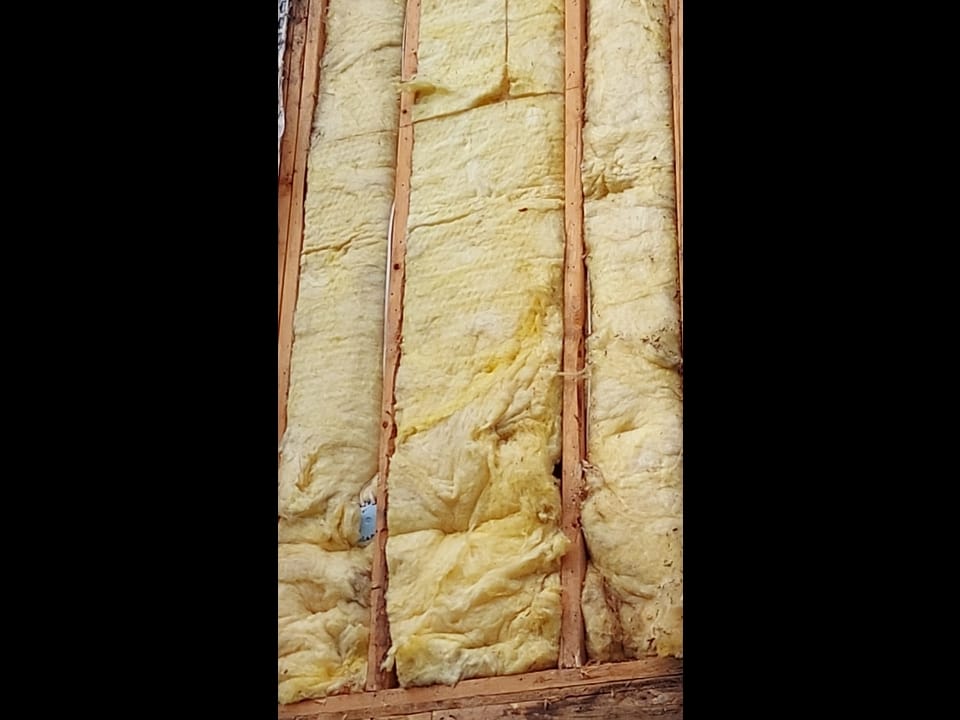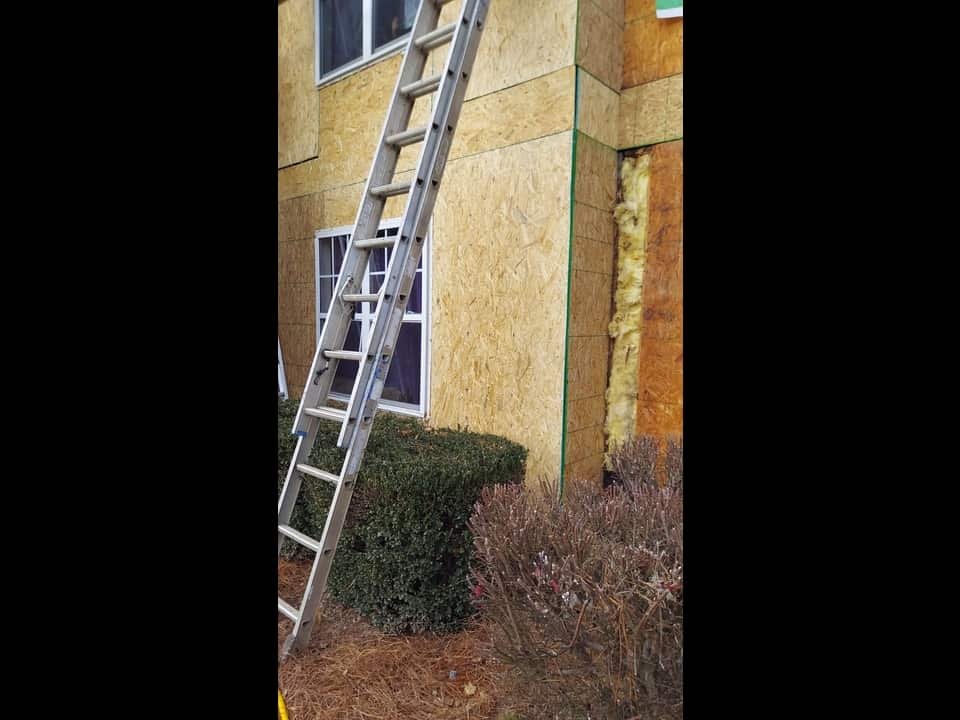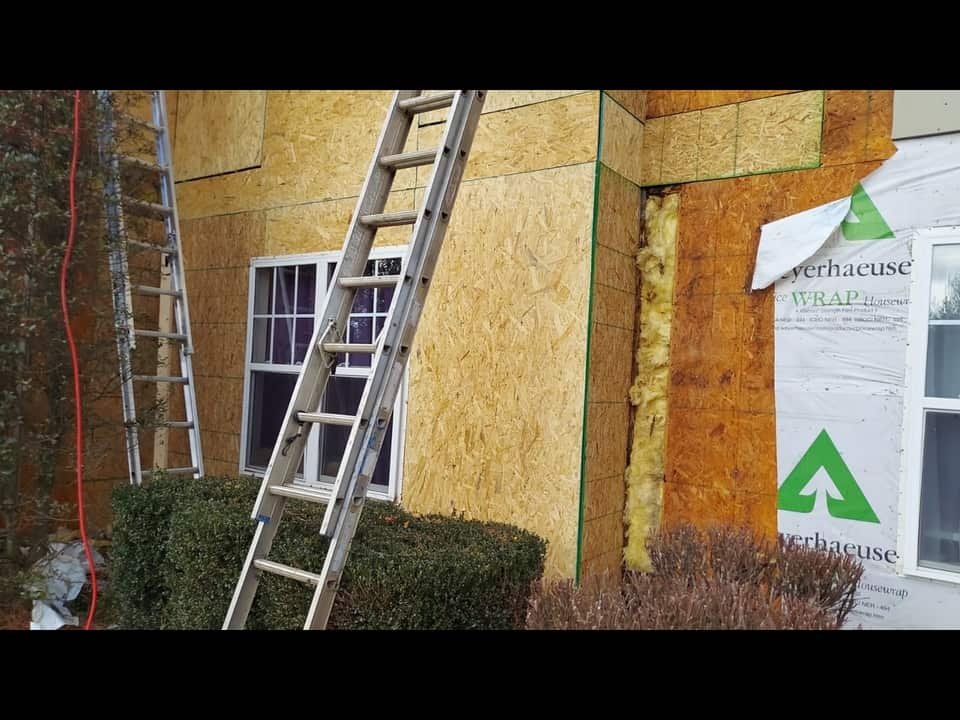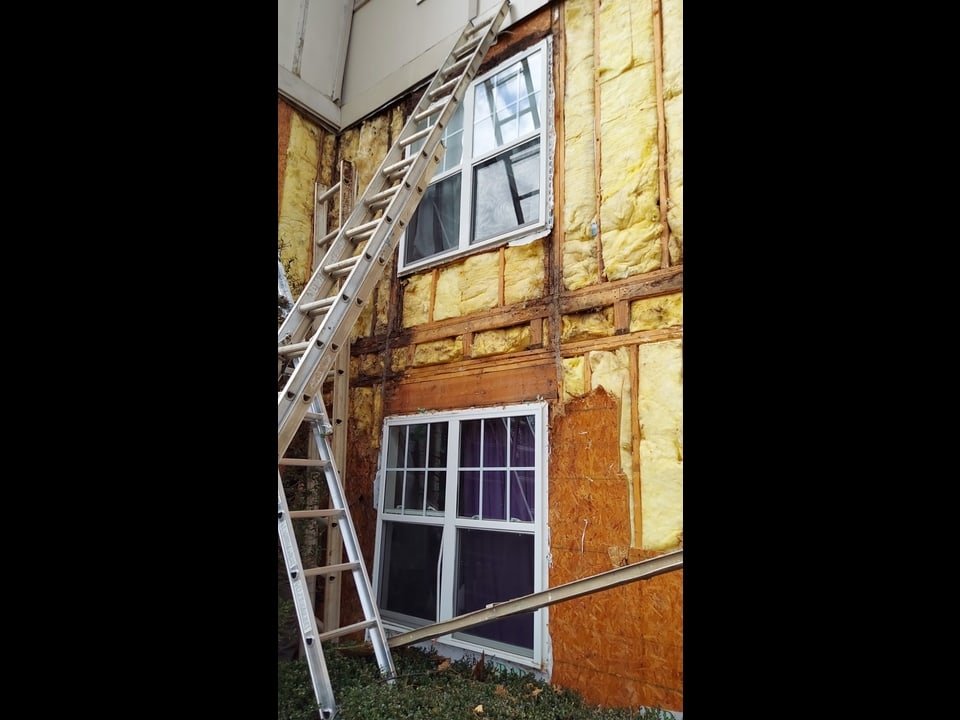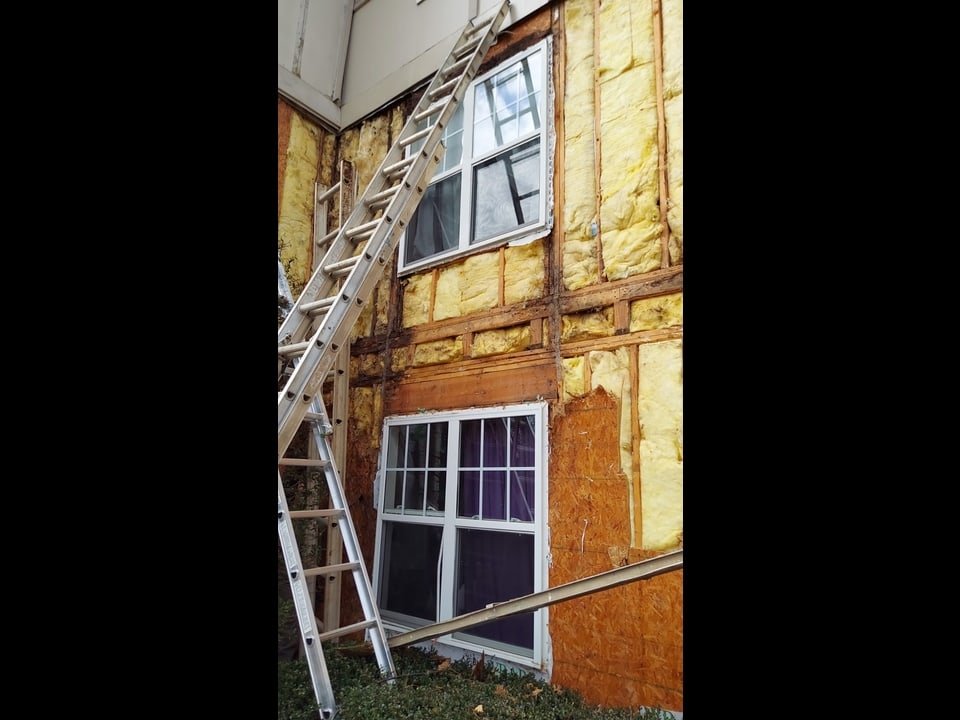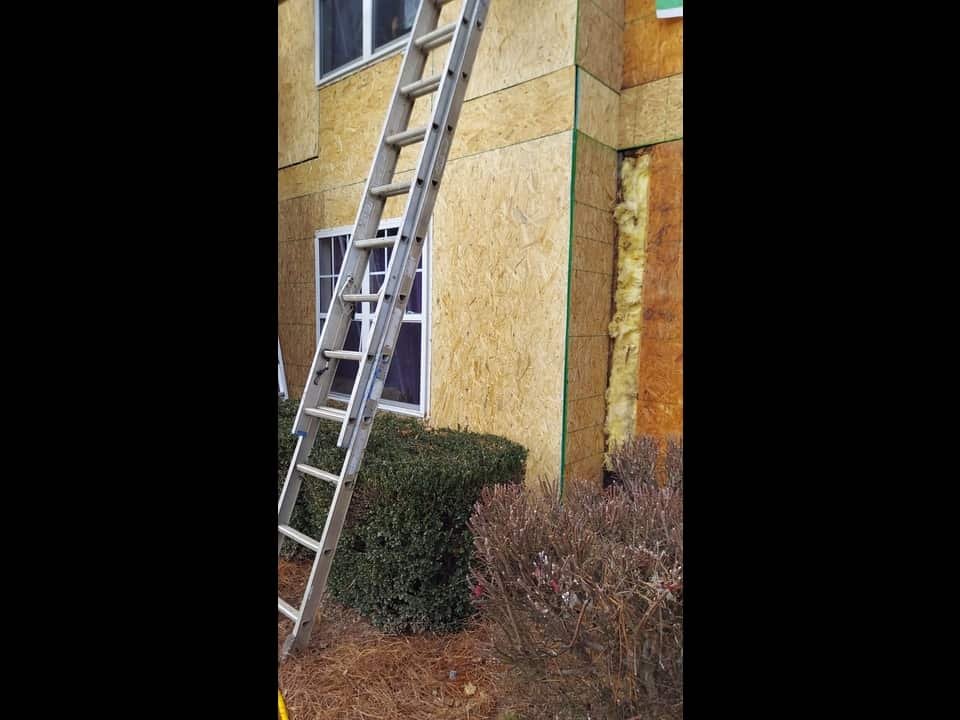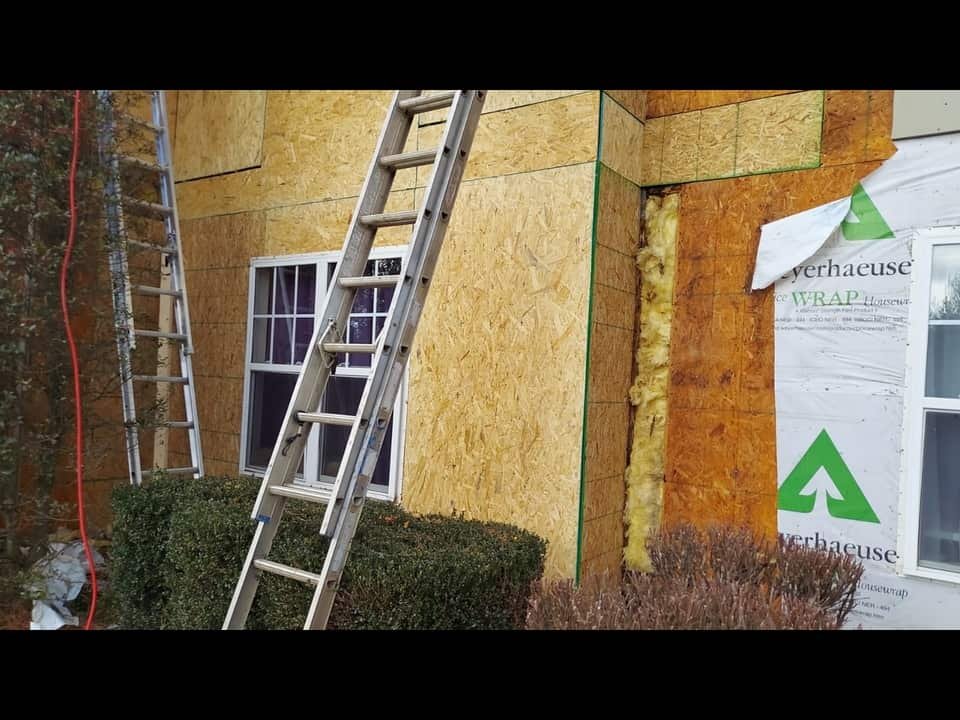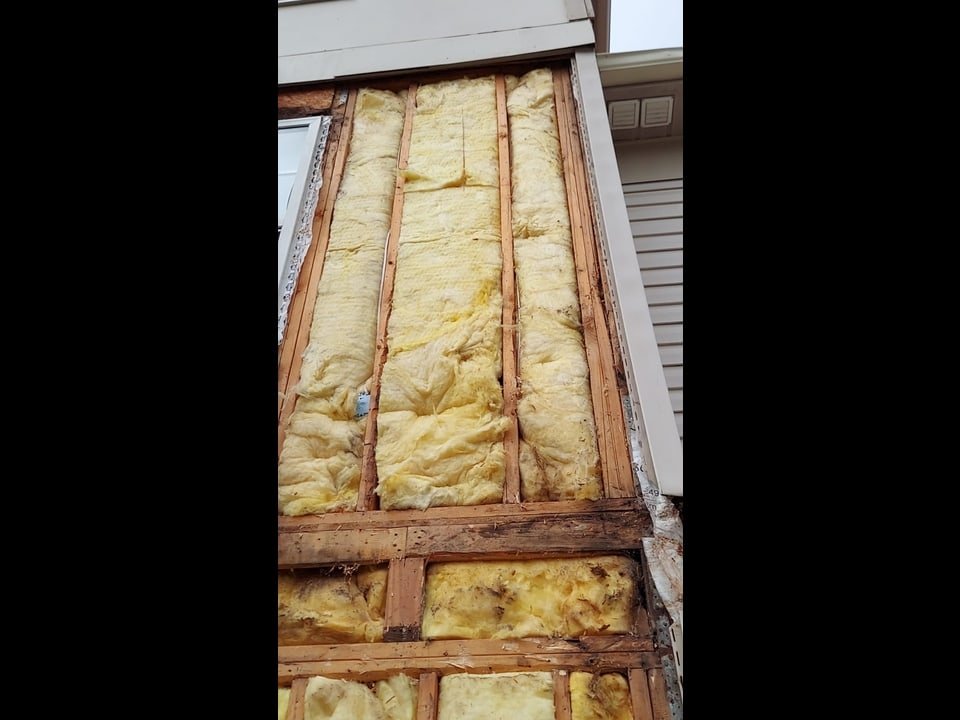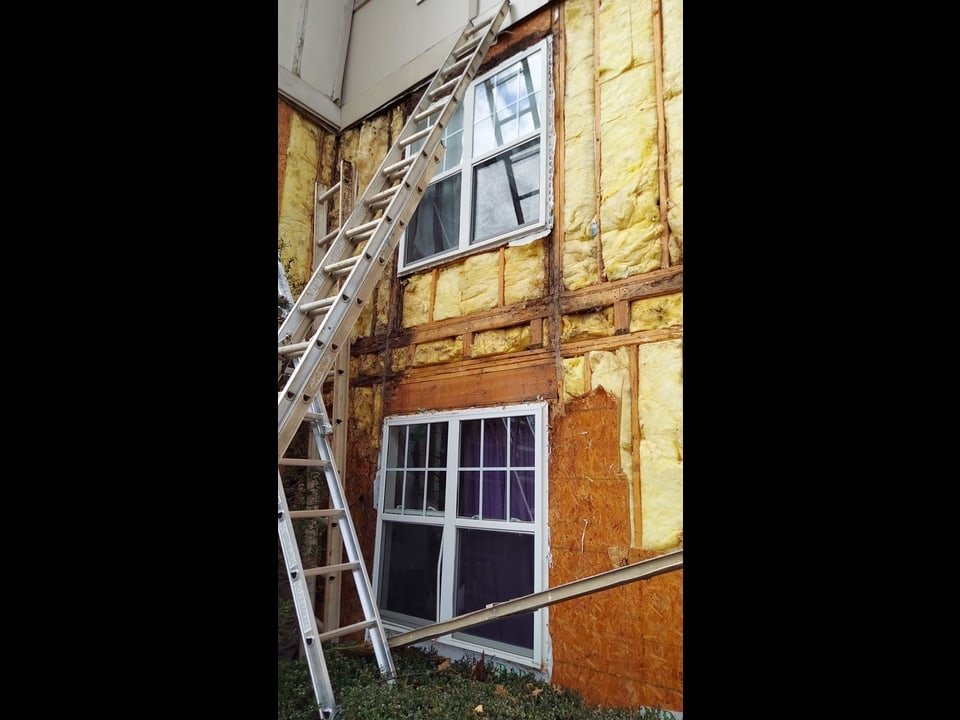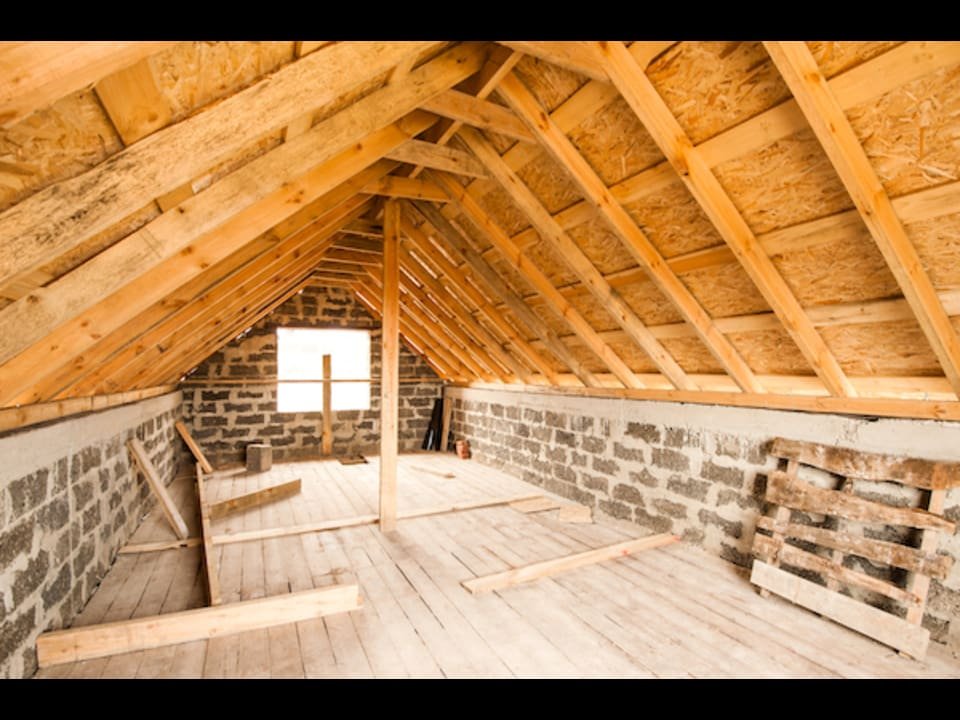Menú
Green Mountain Constructions Asheville
Services
Siding
Siding or wall cladding is the protective material attached to the exterior side of a wall of a house or other building. Along with the roof, it forms the first line of defense against the elements, most importantly sun, rain/snow, heat and cold, thus creating a stable, more comfortable environment on the interior side. The siding material and style also can enhance or detract from the building's beauty. There is a wide and expanding variety of materials to side with, both natural and artificial, each with its own benefits and drawbacks. Masonry walls as such do not require siding, but any wall can be sided. Walls that are internally framed, whether with wood, or steel I-beams, however, must always be sided.

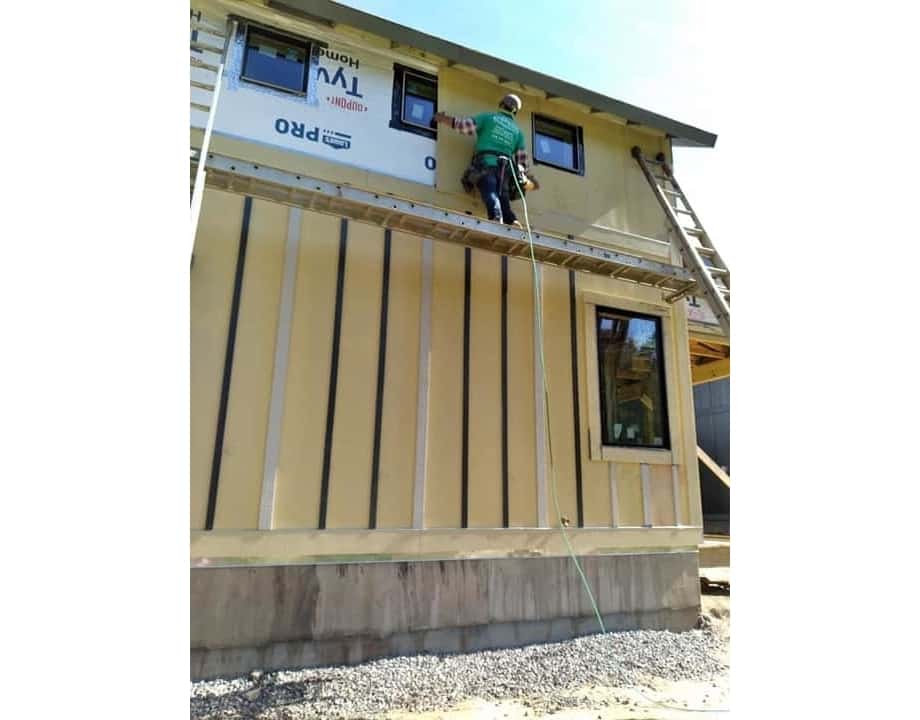

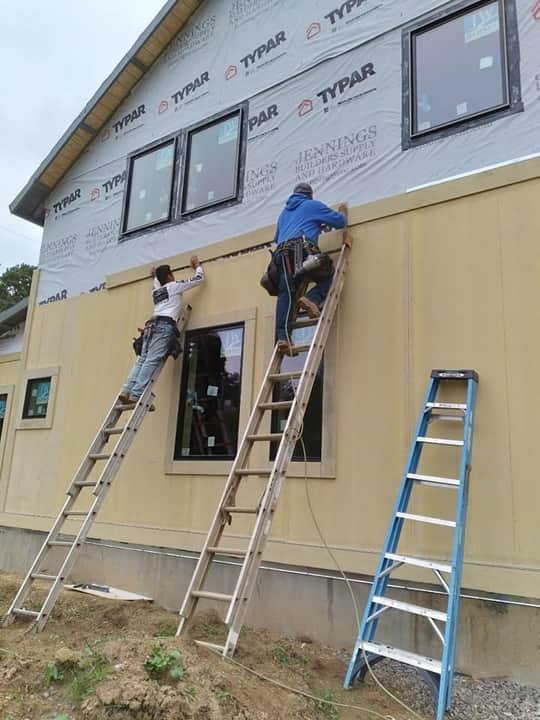



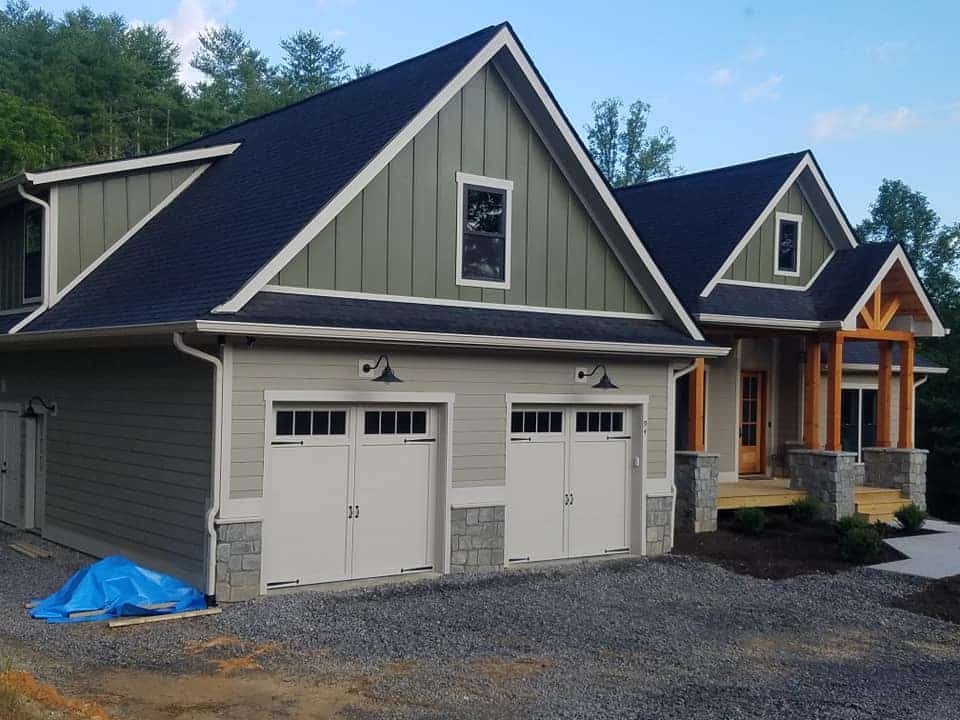
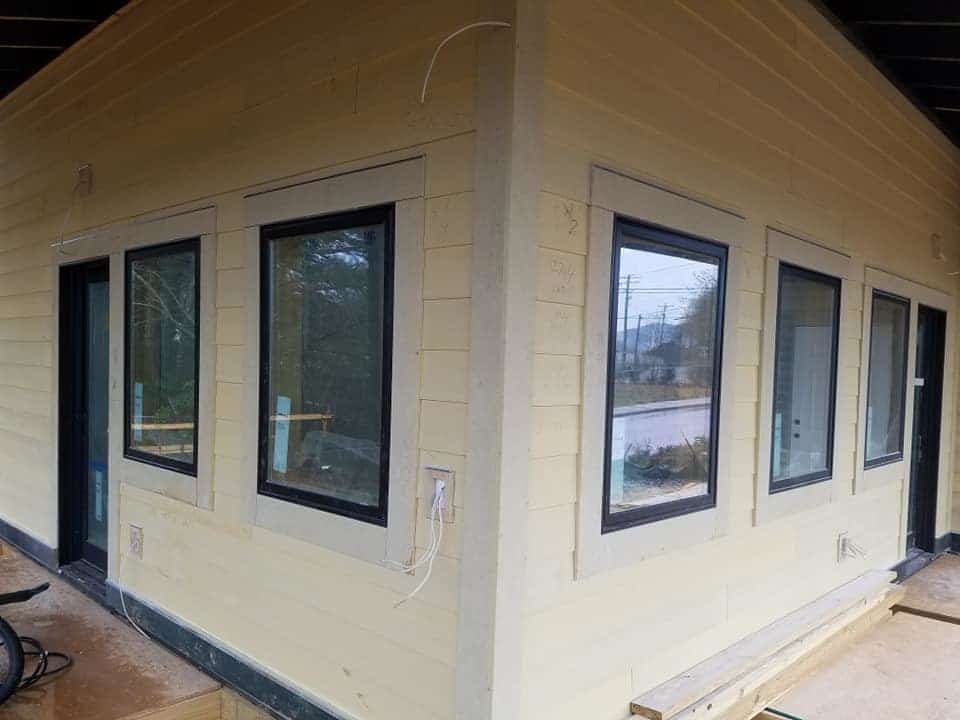
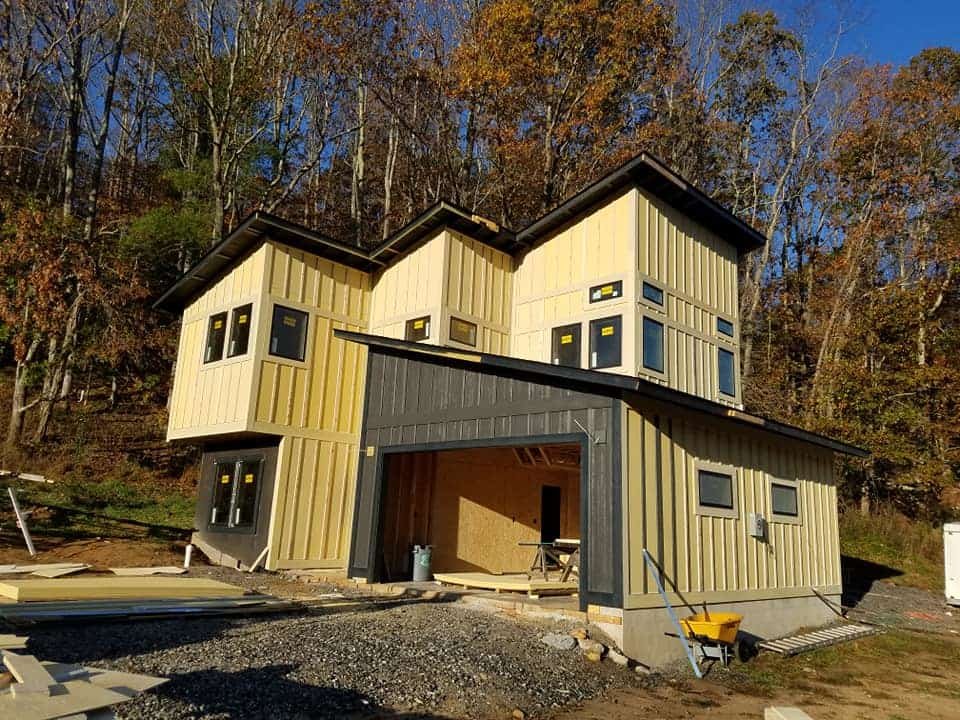
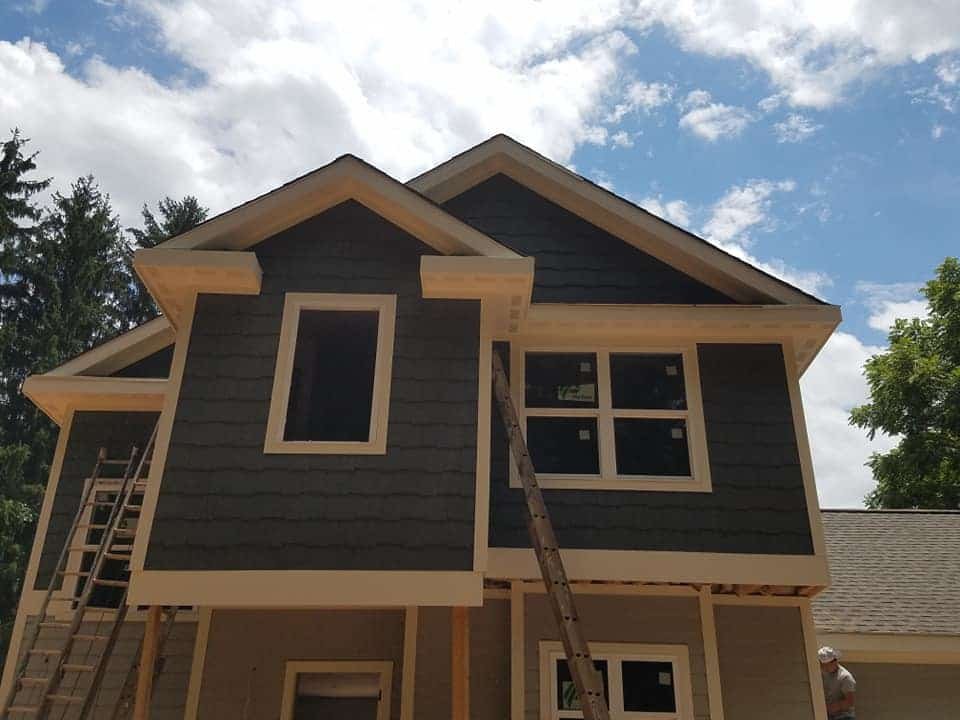
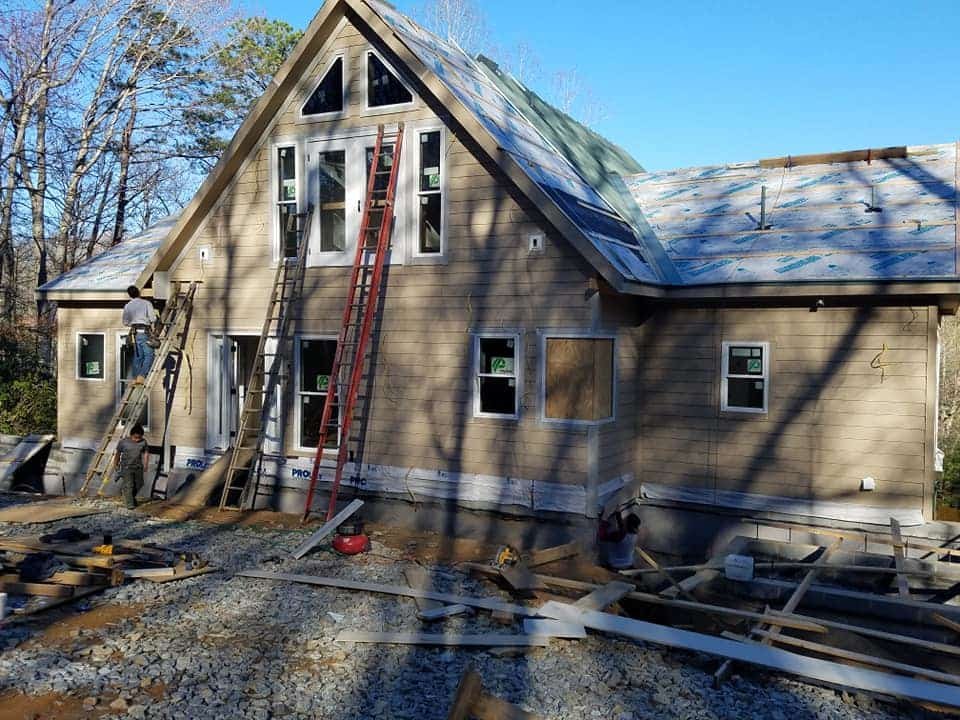
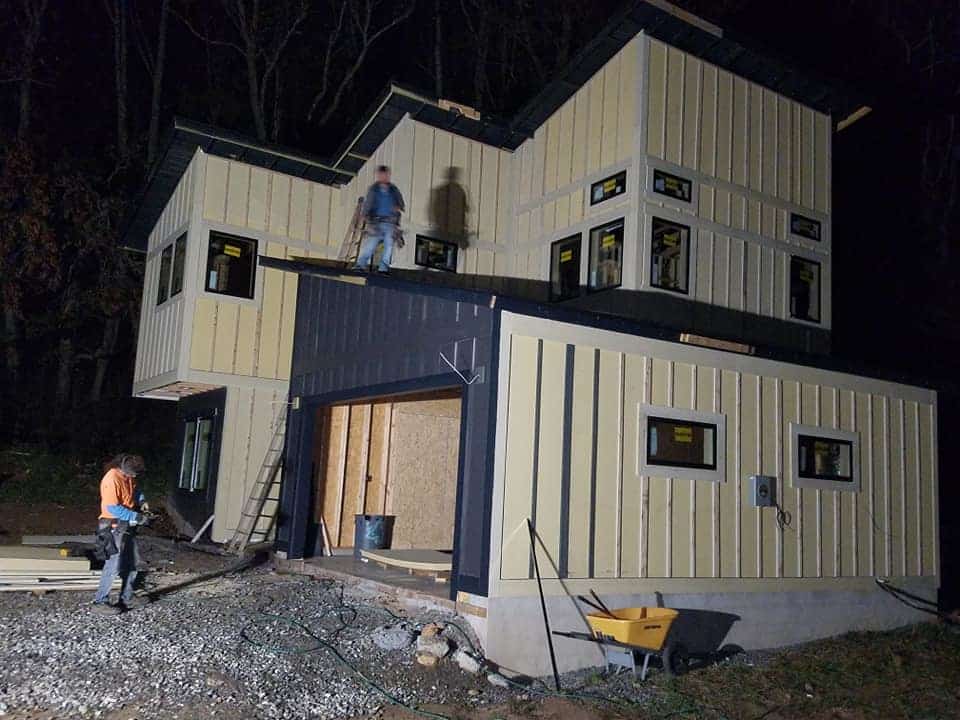
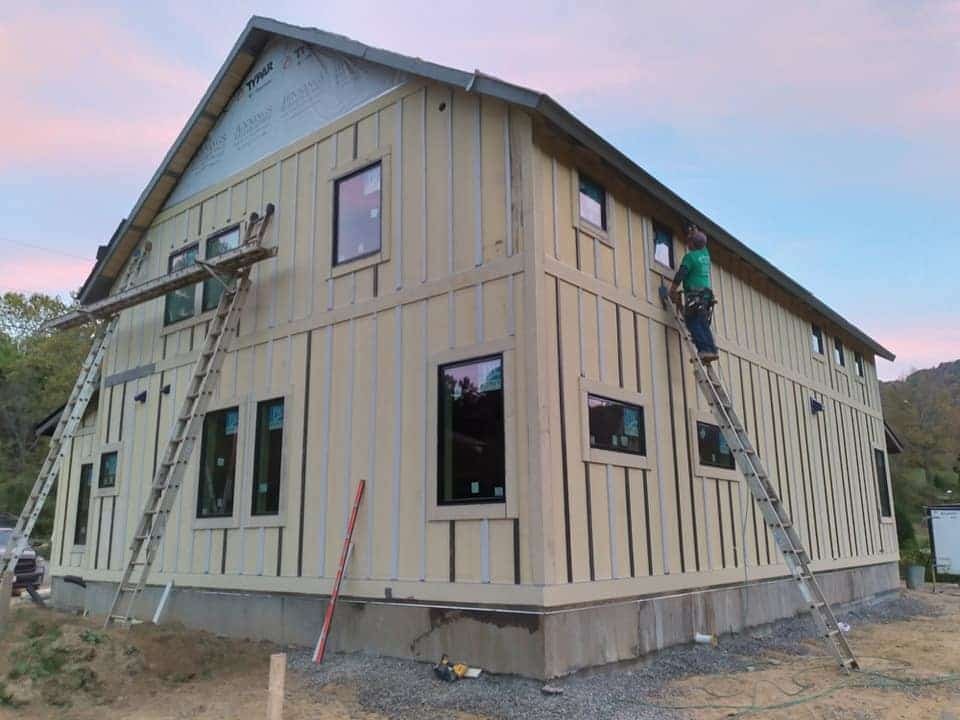

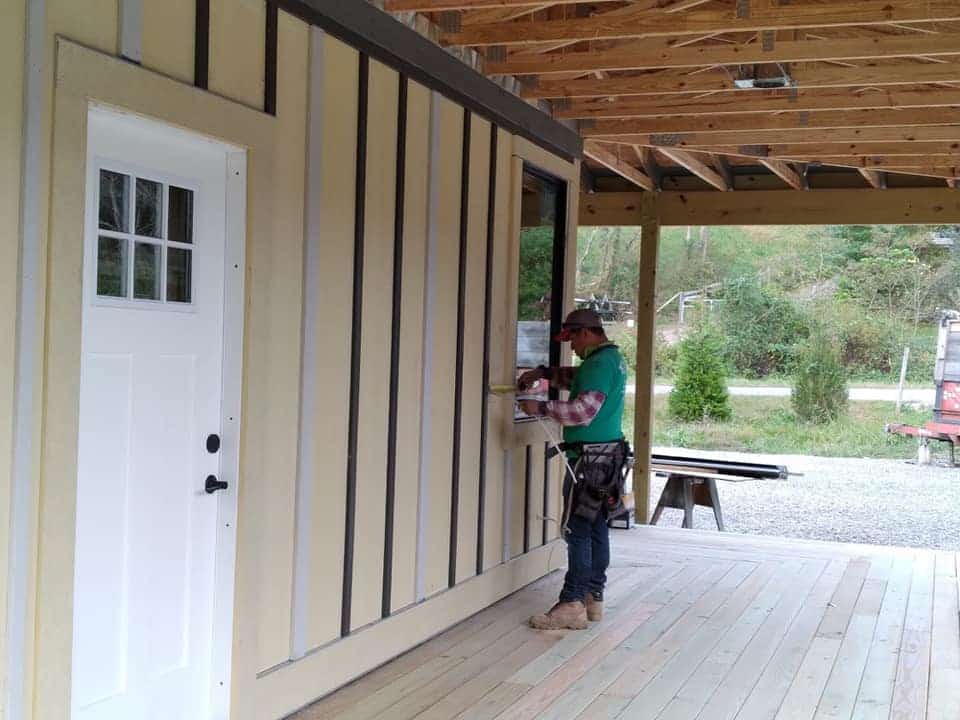

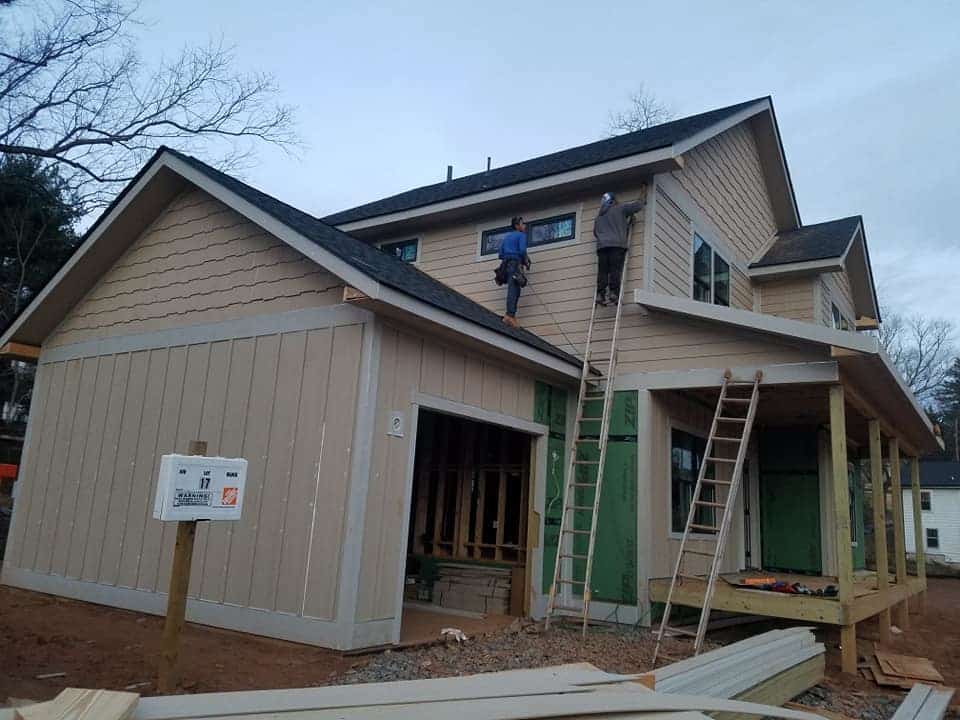

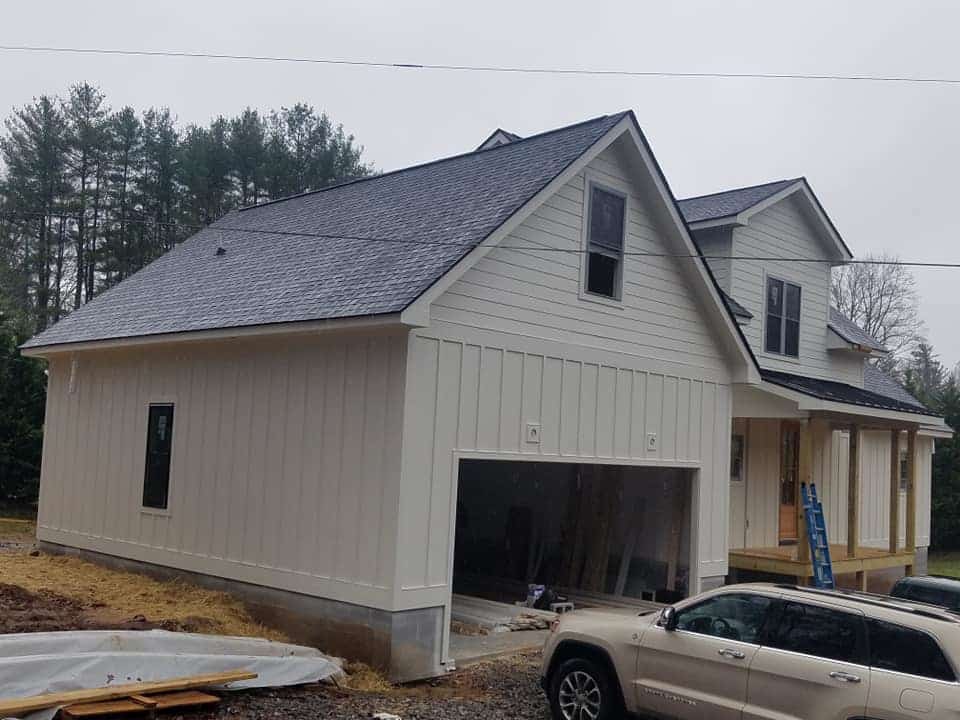
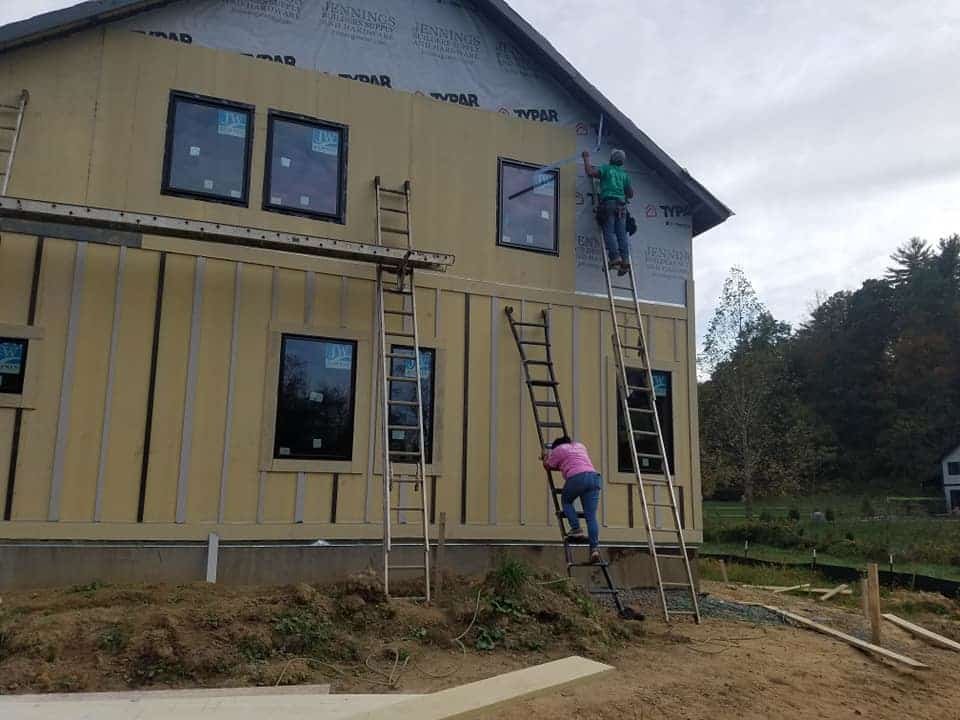

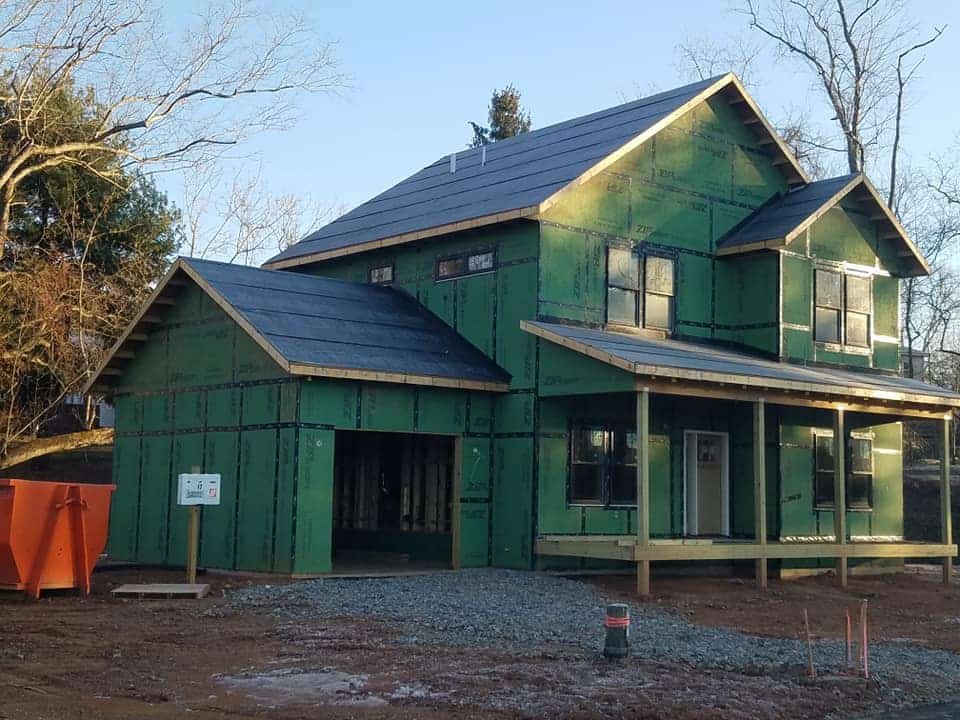

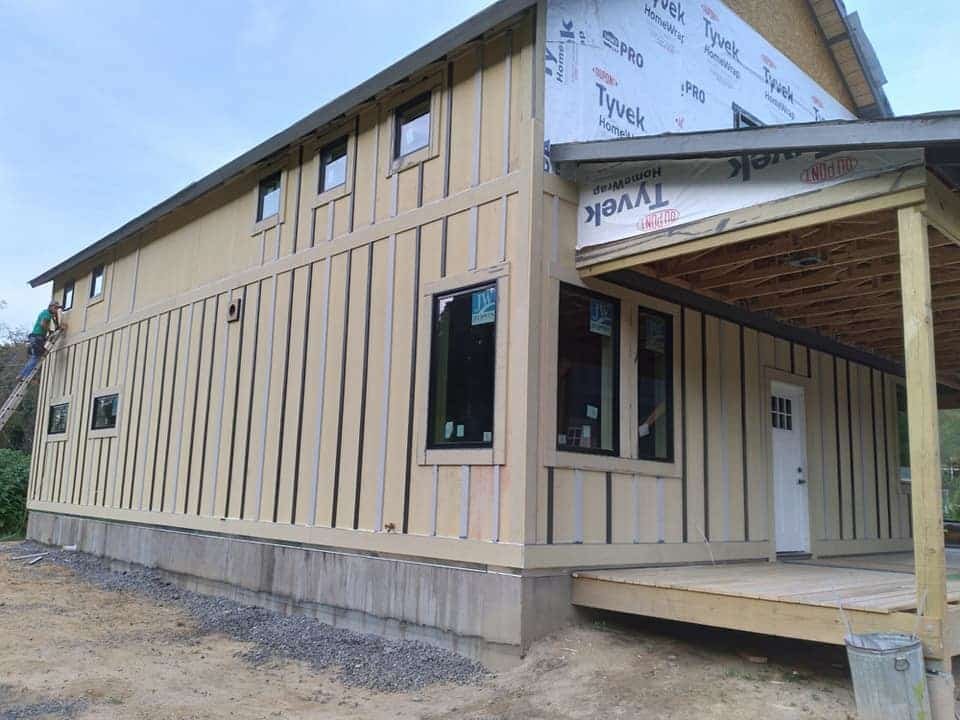
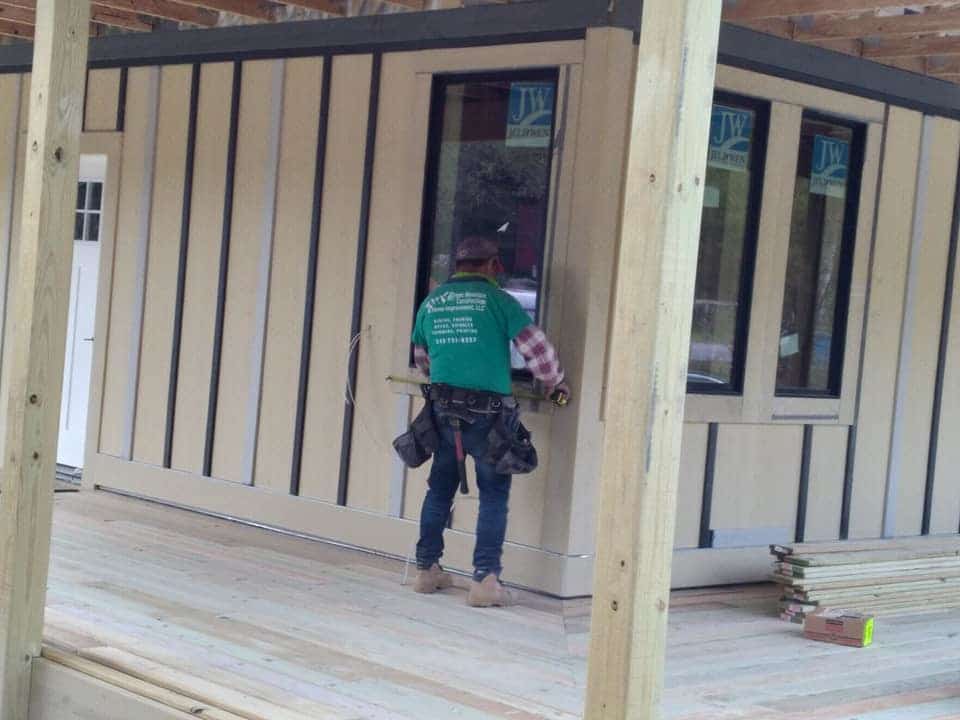

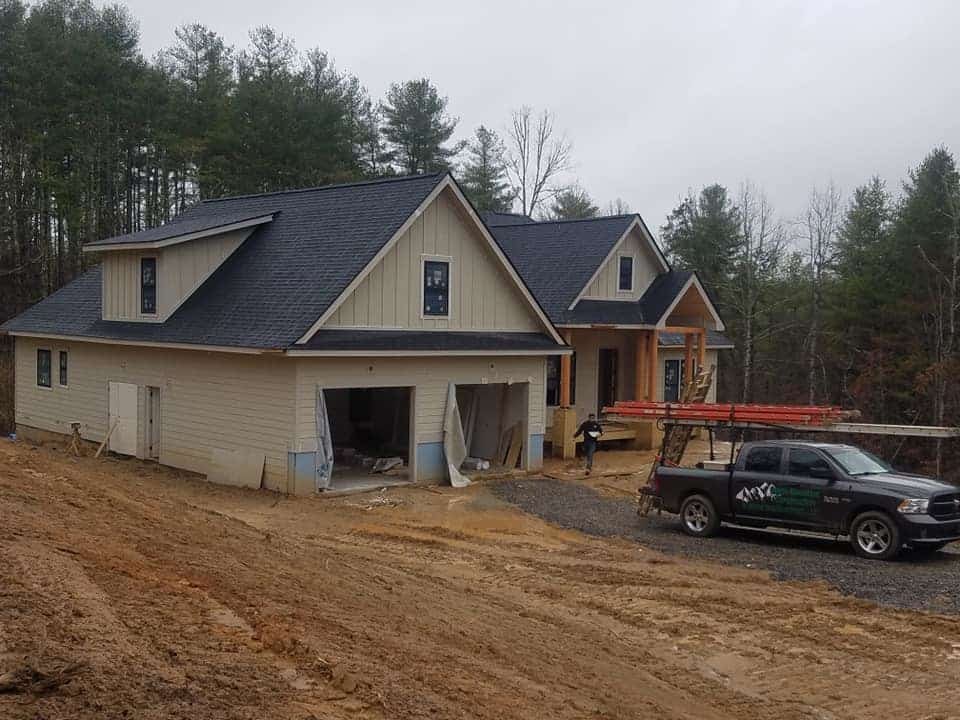
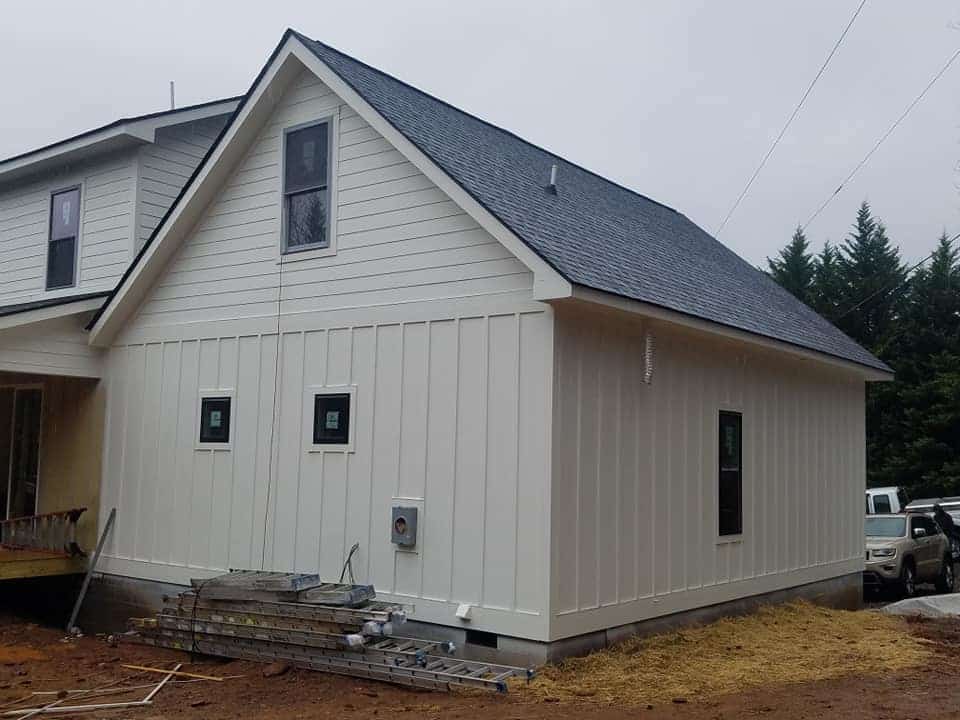
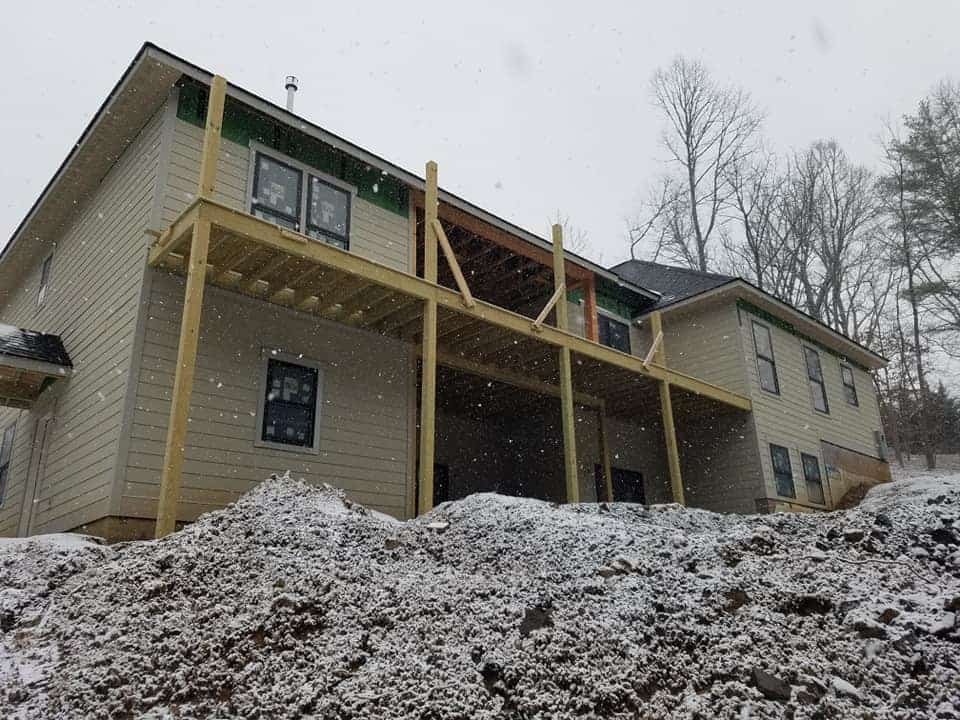

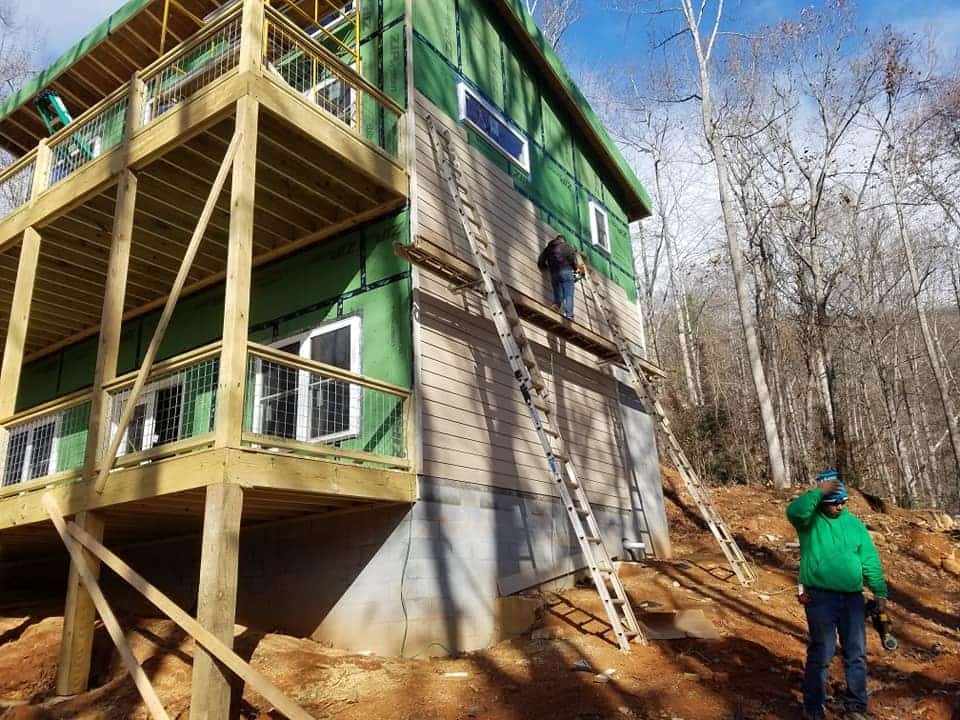
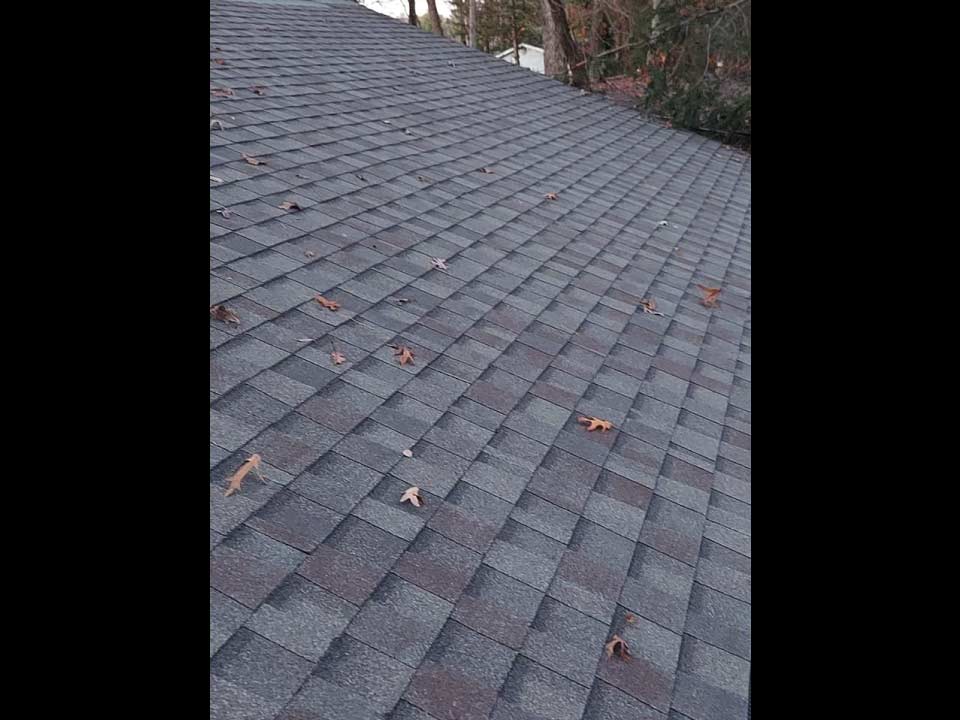

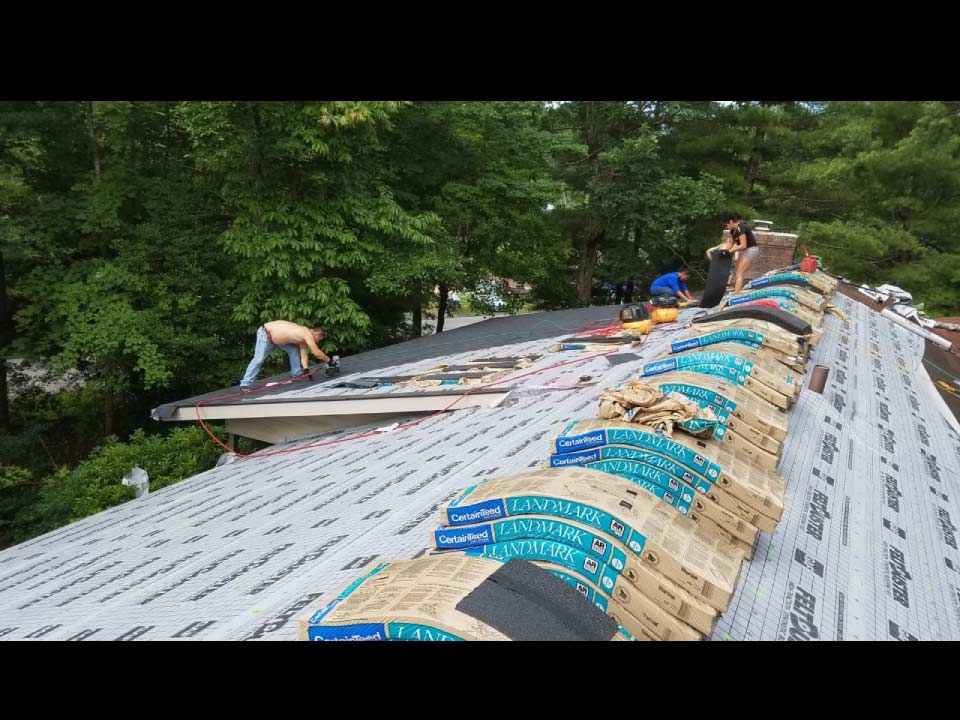

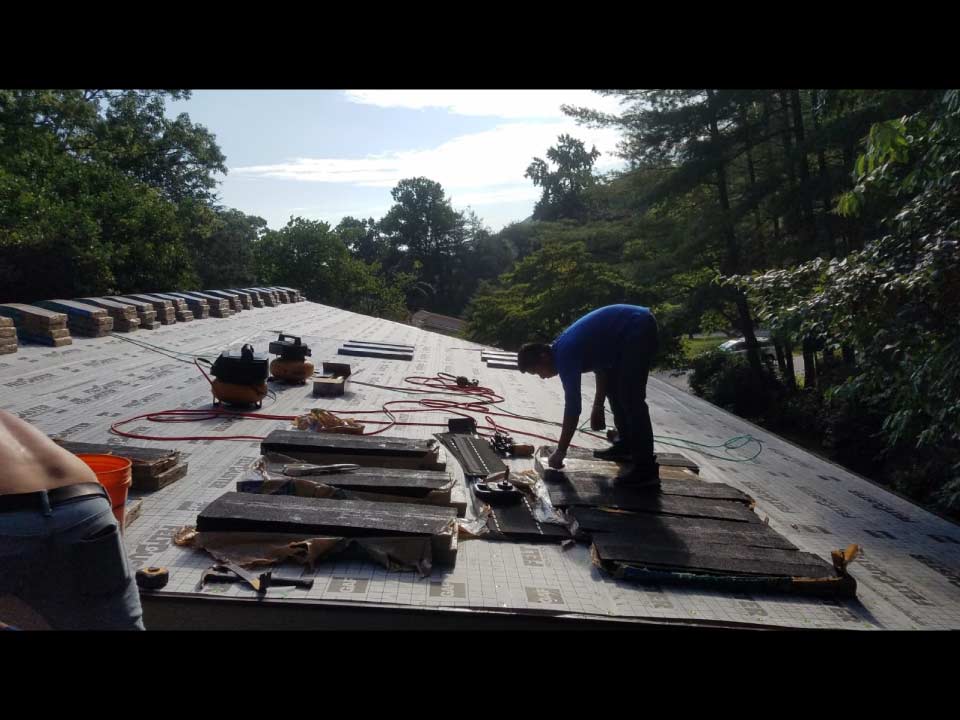
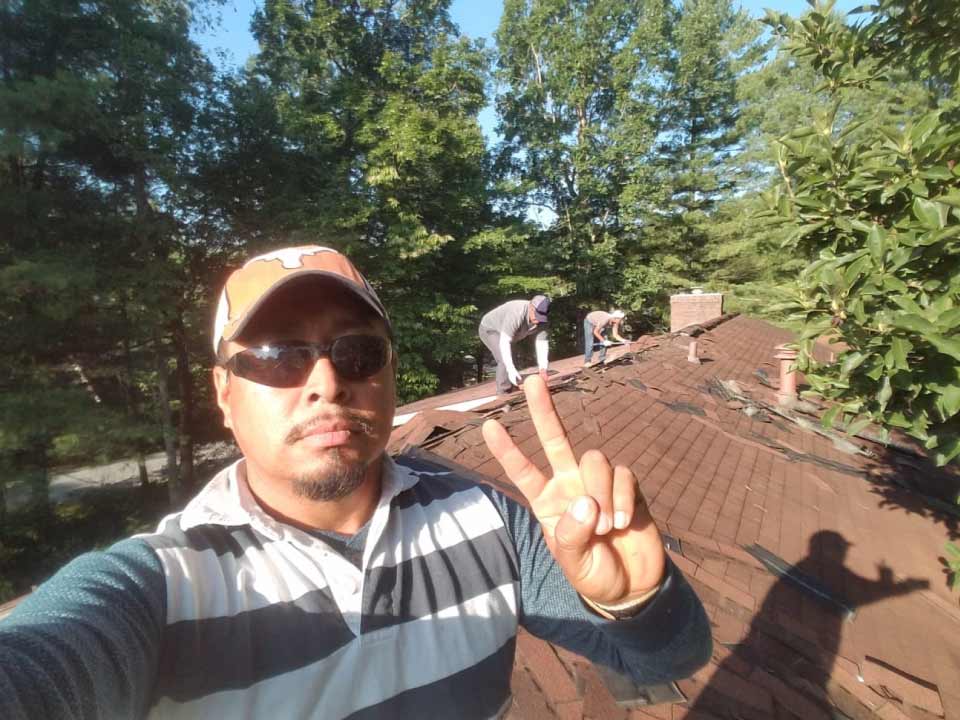



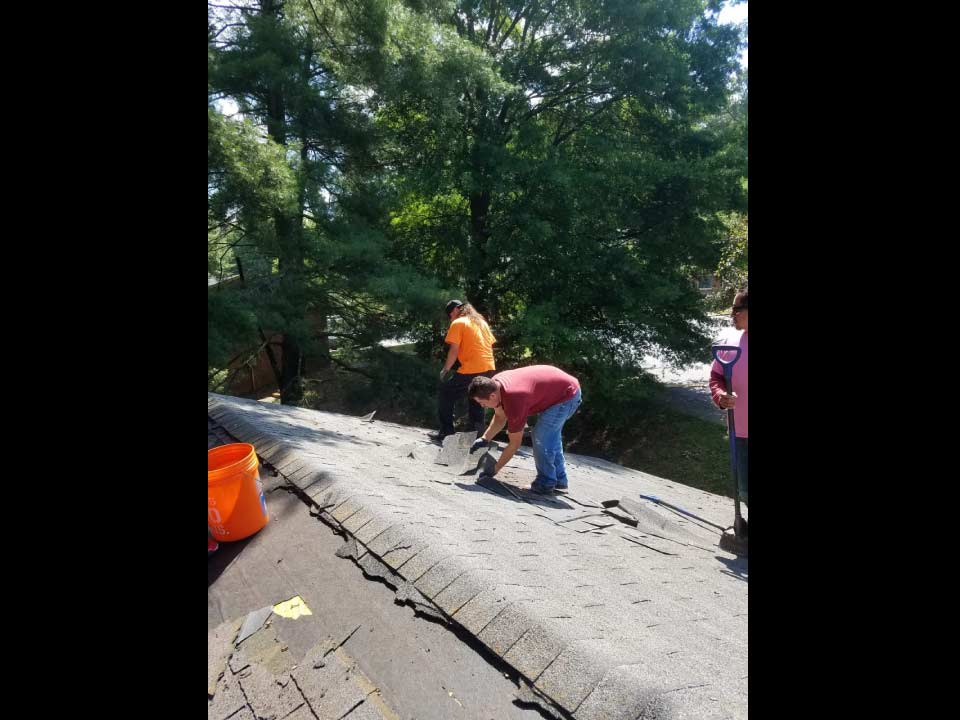
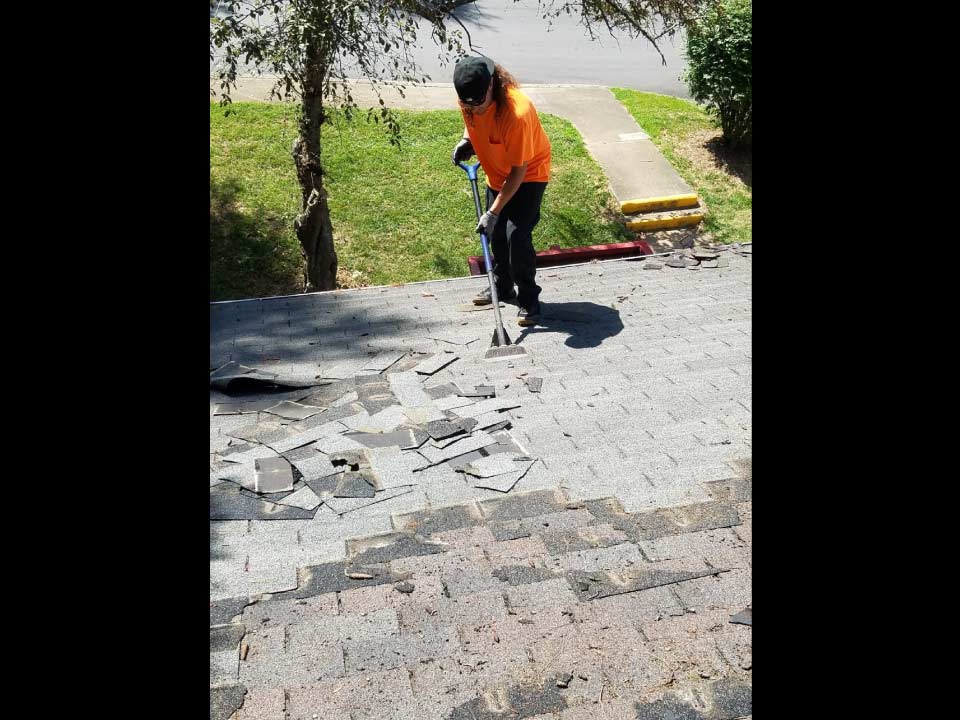
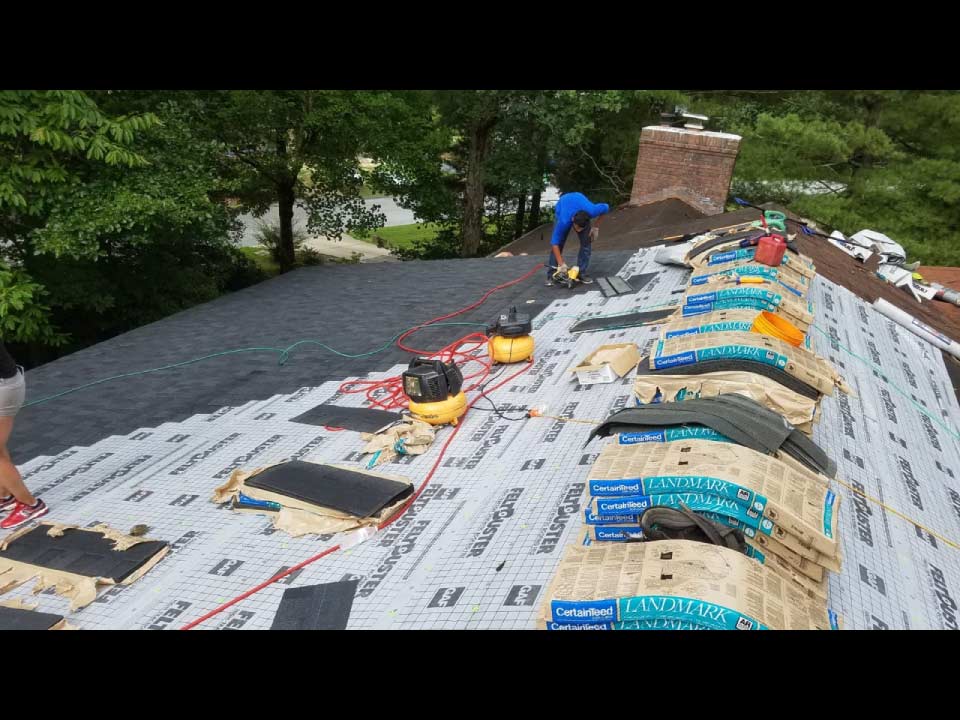


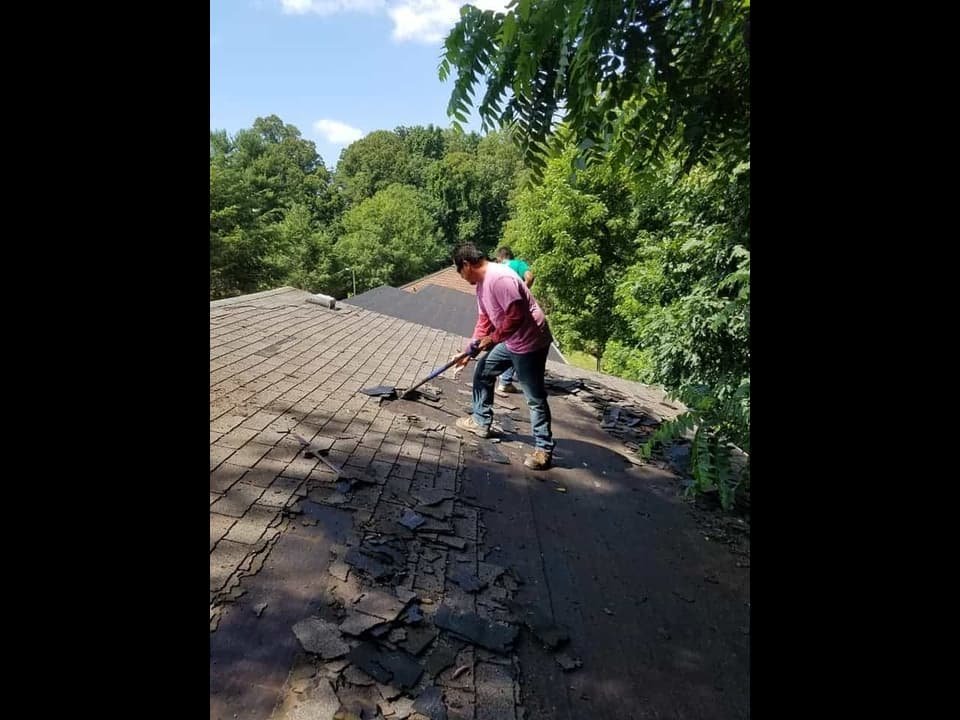
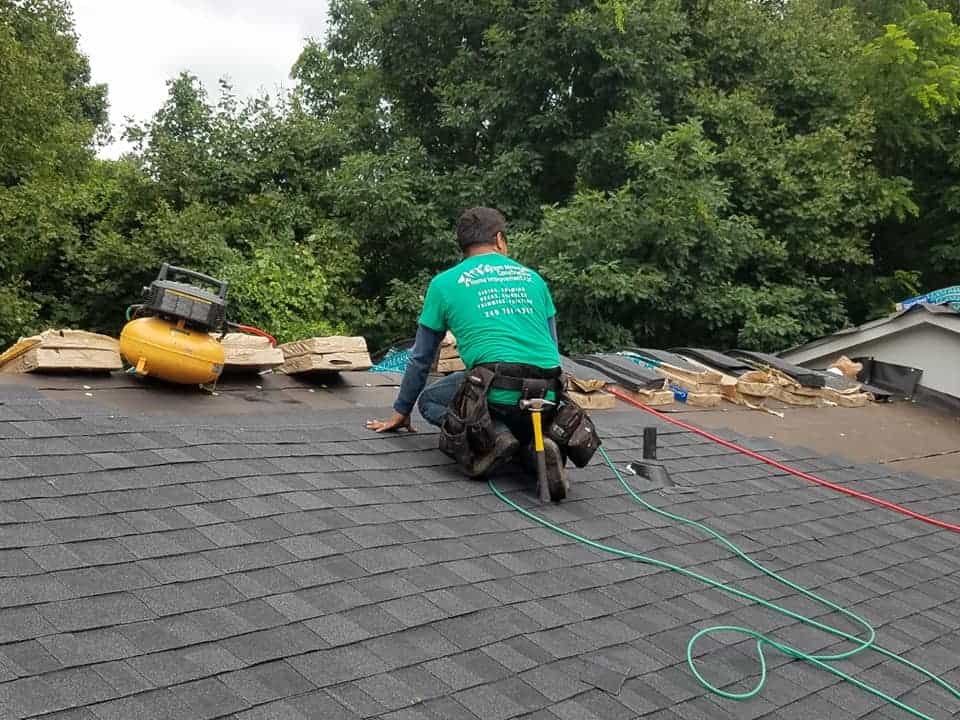
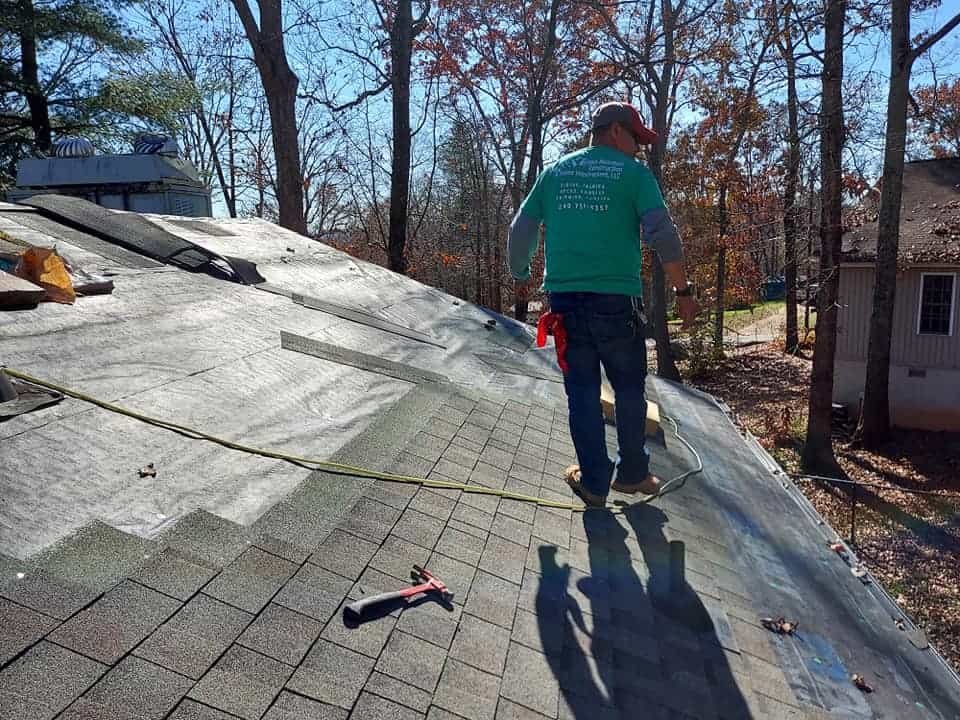
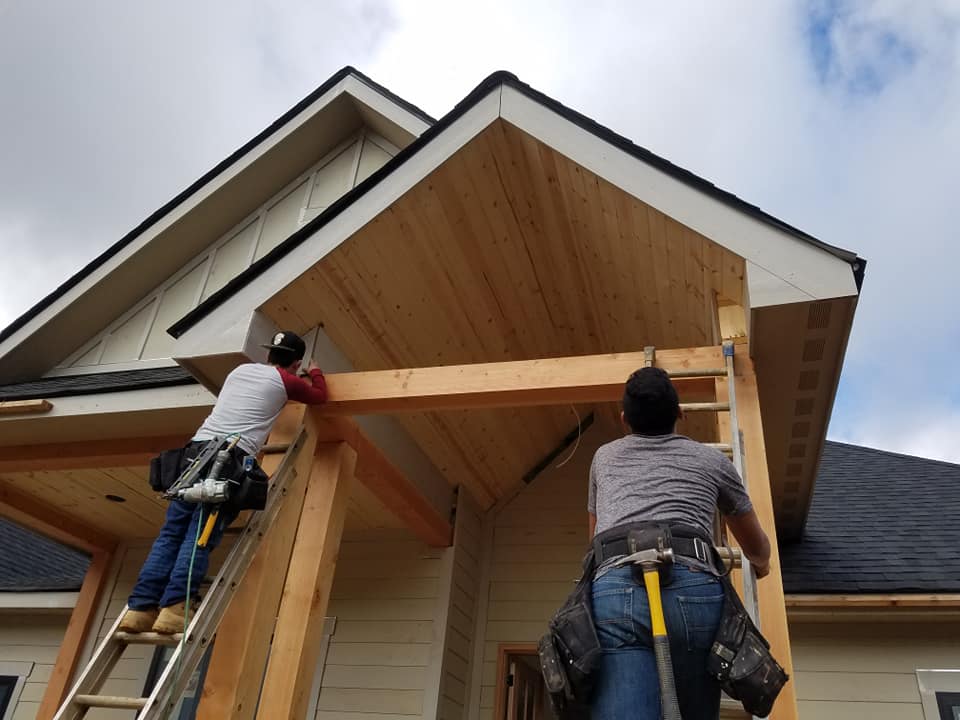








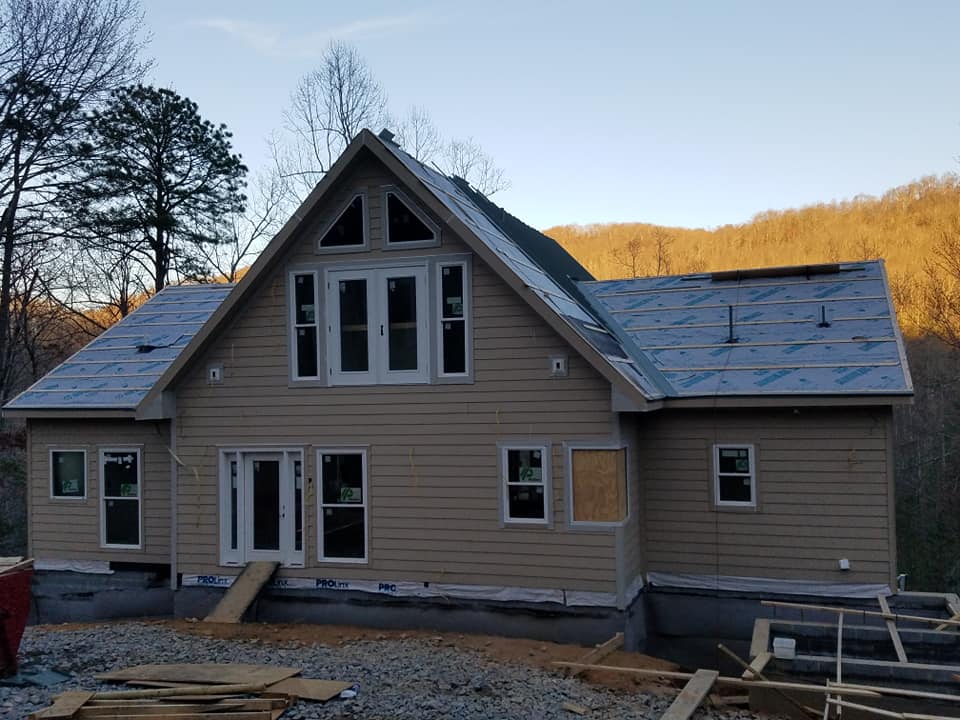
Services
Roofing
Roof shingles are a roof covering consisting of individual overlapping elements. These elements are typically flat, rectangular shapes laid in courses from the bottom edge of the roof up, with each successive course overlapping the joints below. Shingles are held by the roof rafters and are made of various materials such as wood, slate, flagstone, metal, plastic, and composite materials such as fibre cement and asphalt shingles. Ceramic roof tiles, which still dominate in Europe and some parts of Asia, are still usually called tiles. Roof shingles may deteriorate faster and need to repel more water than wall shingles. They are a very common roofing material in the United States.
Services
Framing
Framing, in construction, is the fitting together of pieces to give a structure support and shape.Framing materials are usually wood, engineered wood, or structural steel. The alternative to framed construction is generally called mass wall construction, where horizontal layers of stacked materials such as log building, masonry, rammed earth, adobe, etc. are used without framing.[citation needed]
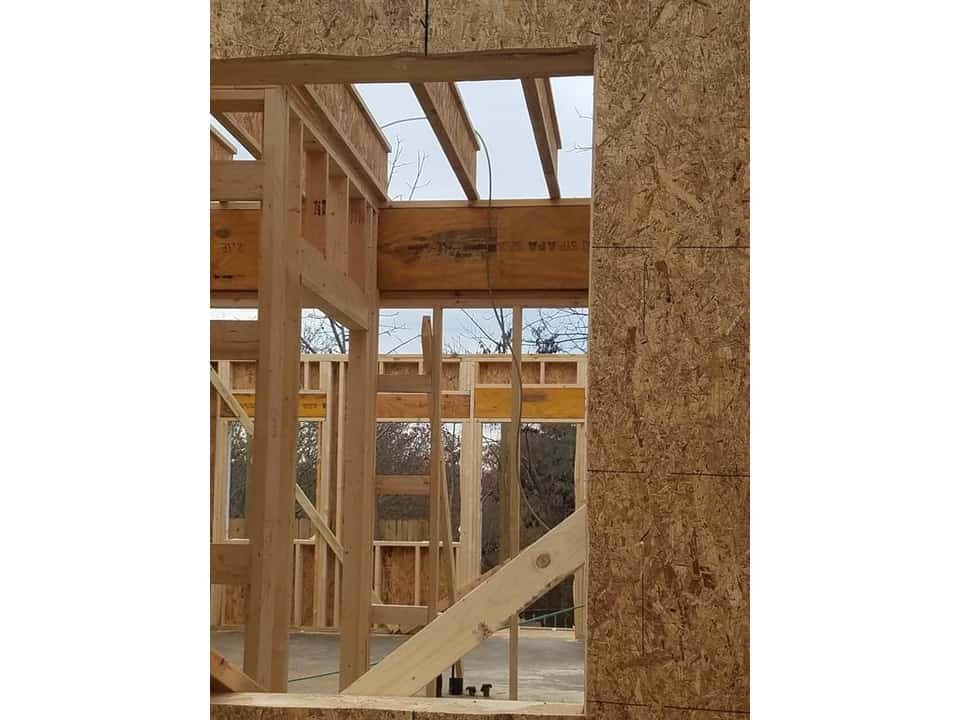

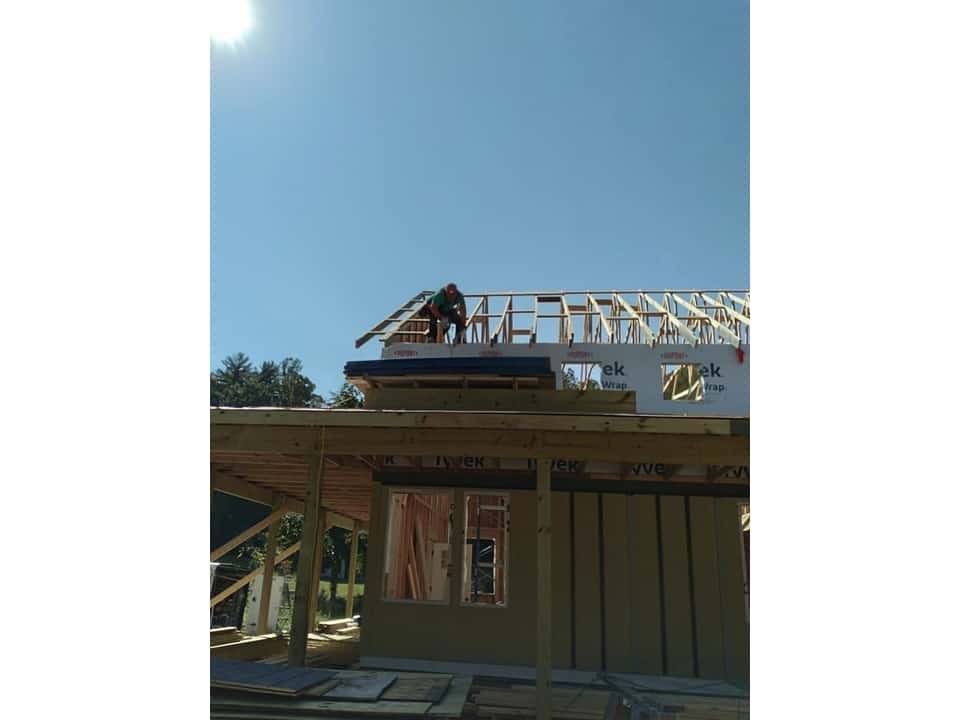

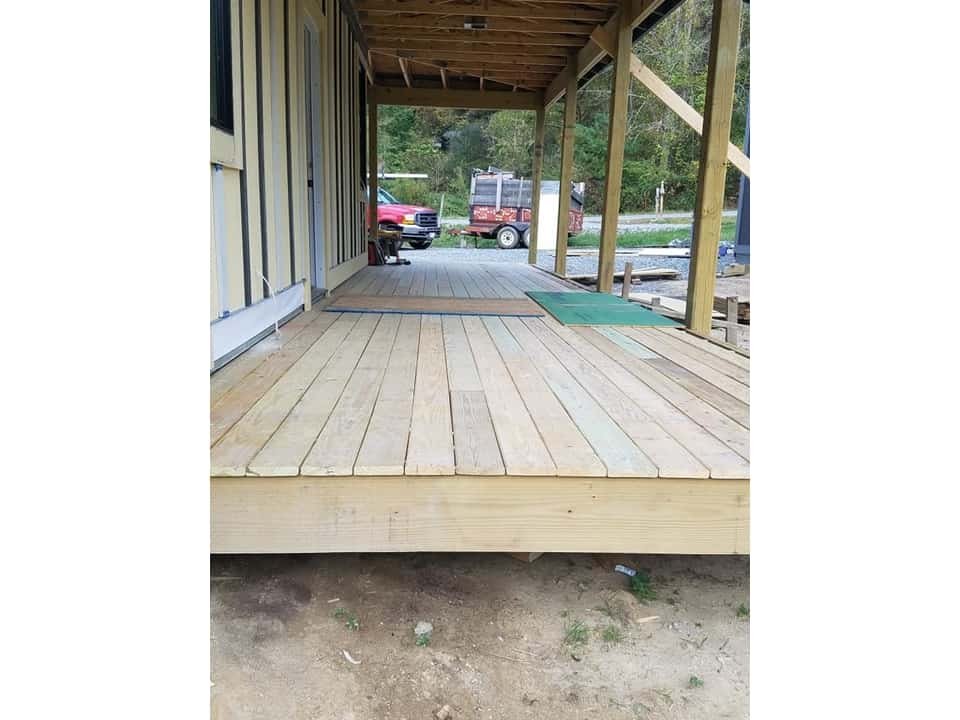

Services
Decks
In architecture, a deck is a flat surface capable of supporting weight, similar to a floor, but typically constructed outdoors, often elevated from the ground, and usually connected to a building. The term is a generalization of decks as found on ships.
Services
Painting
Construction painters make things look clean and finished. They use brushes, rollers, and power sprayers to apply paint, stain, and coatings to walls, buildings, bridges, and other structures.

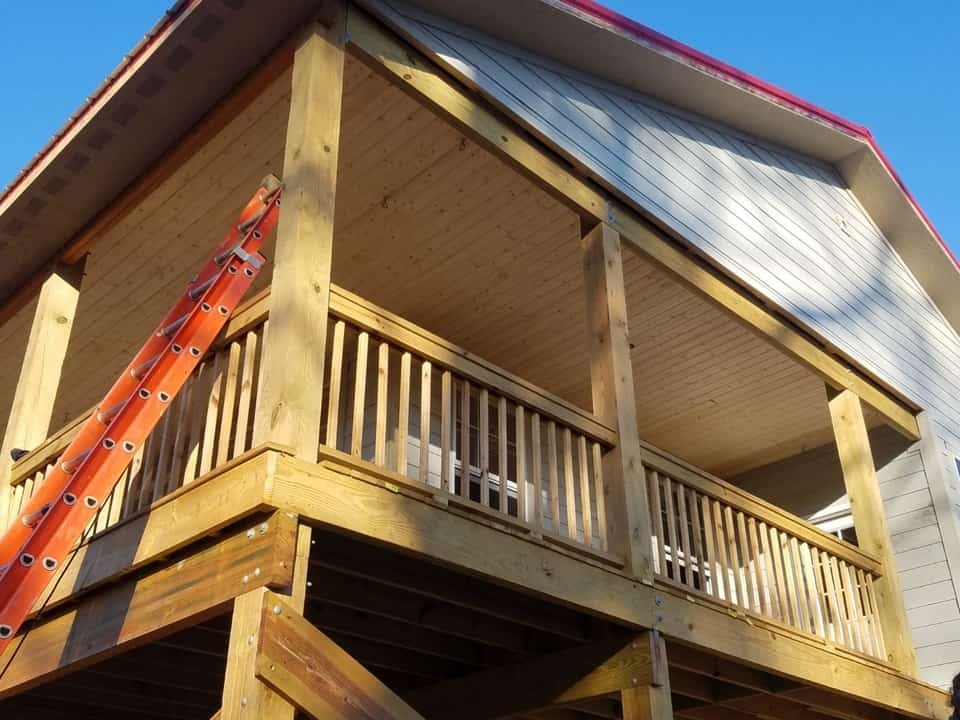
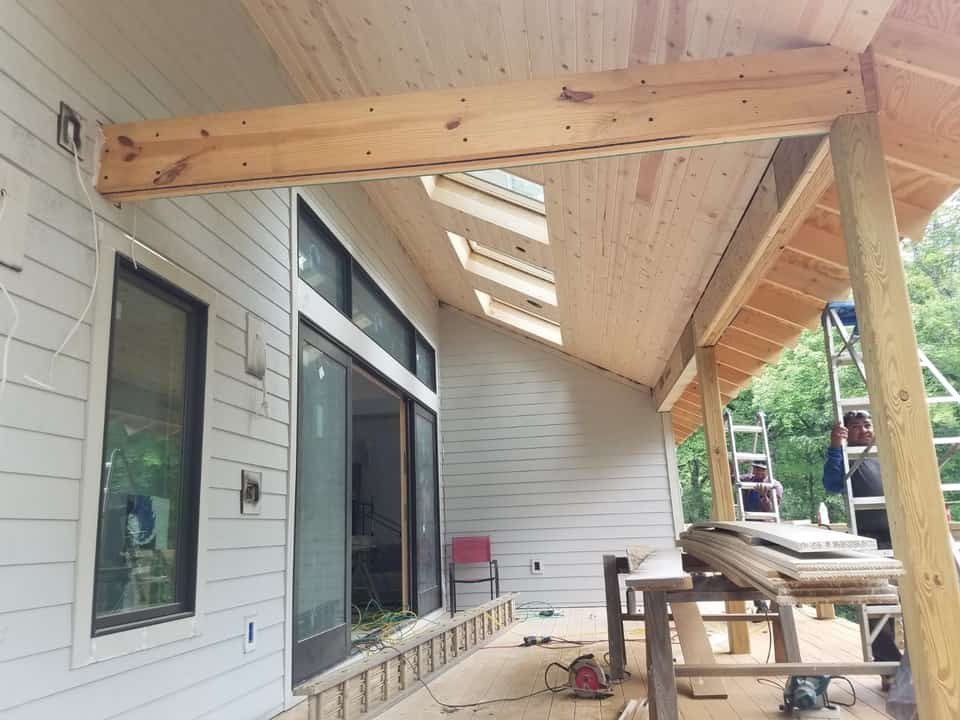
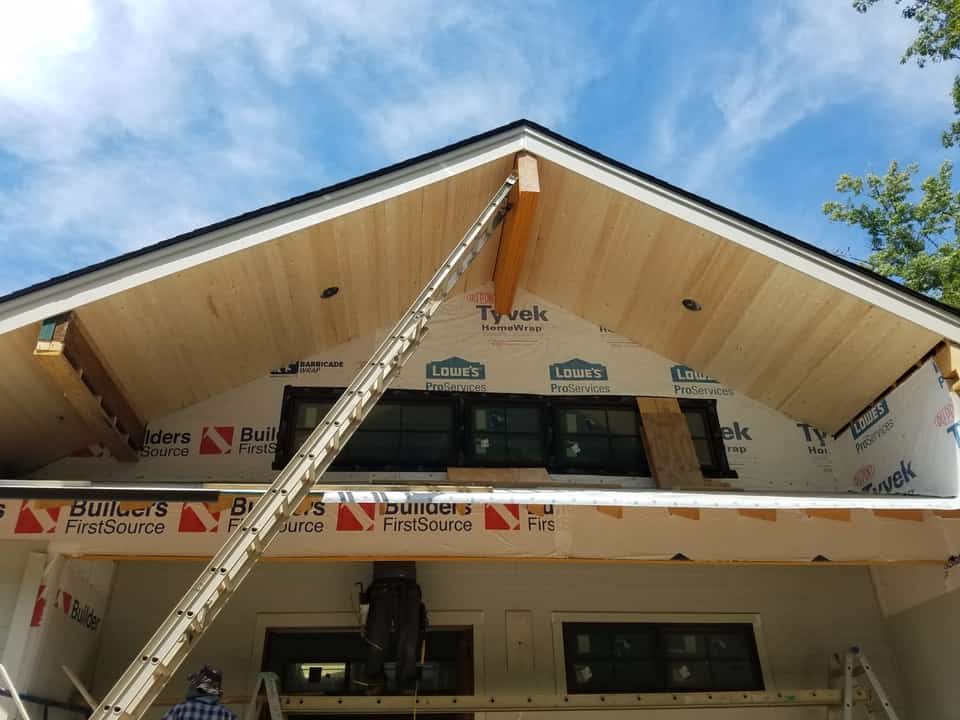
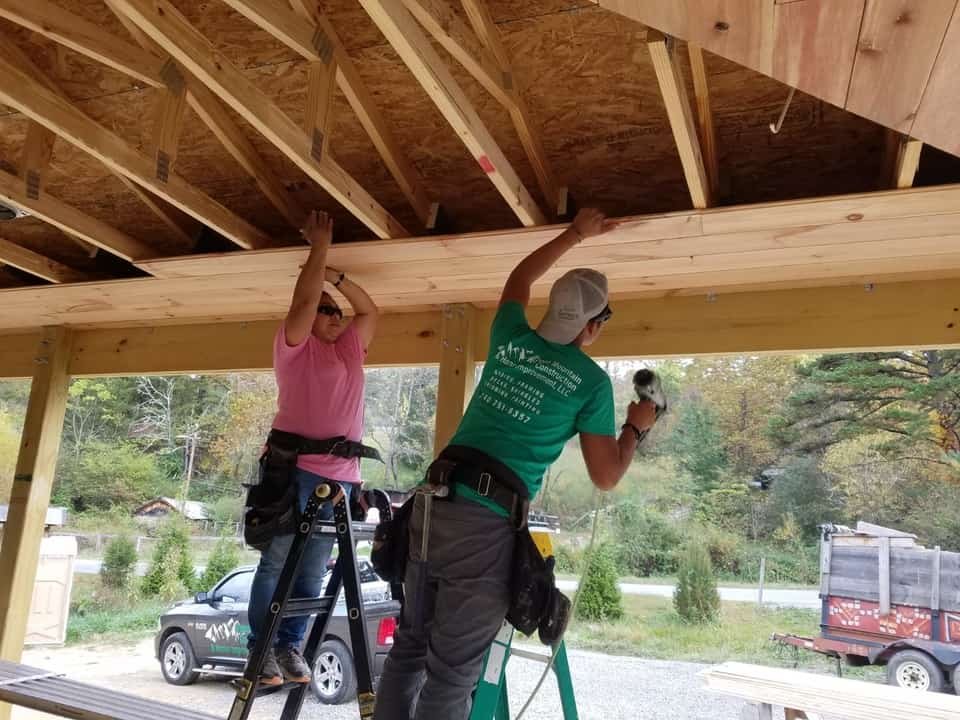
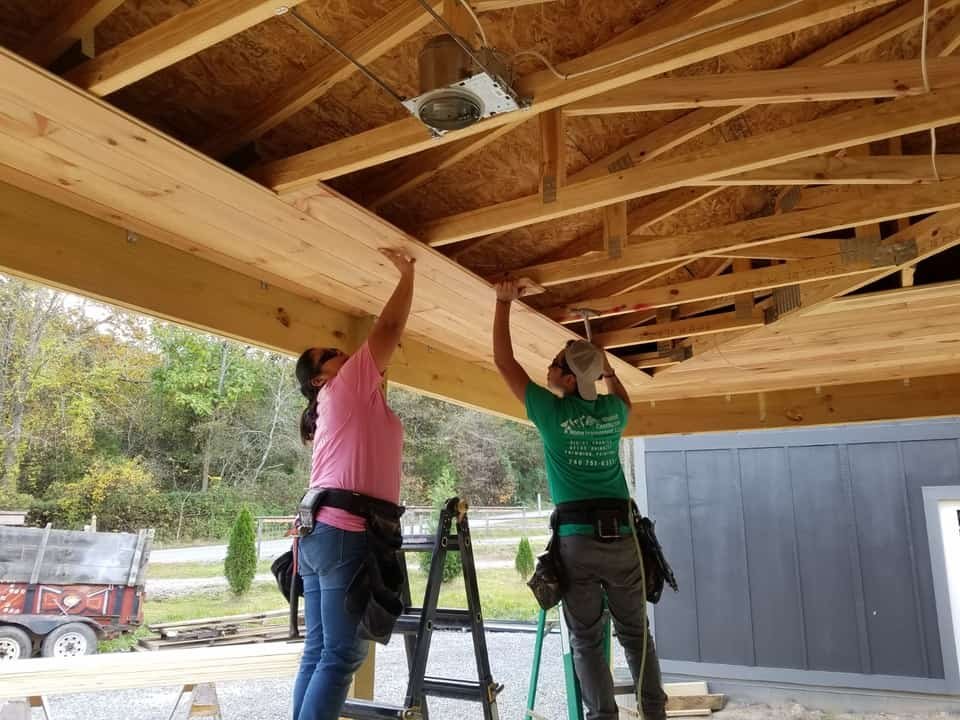
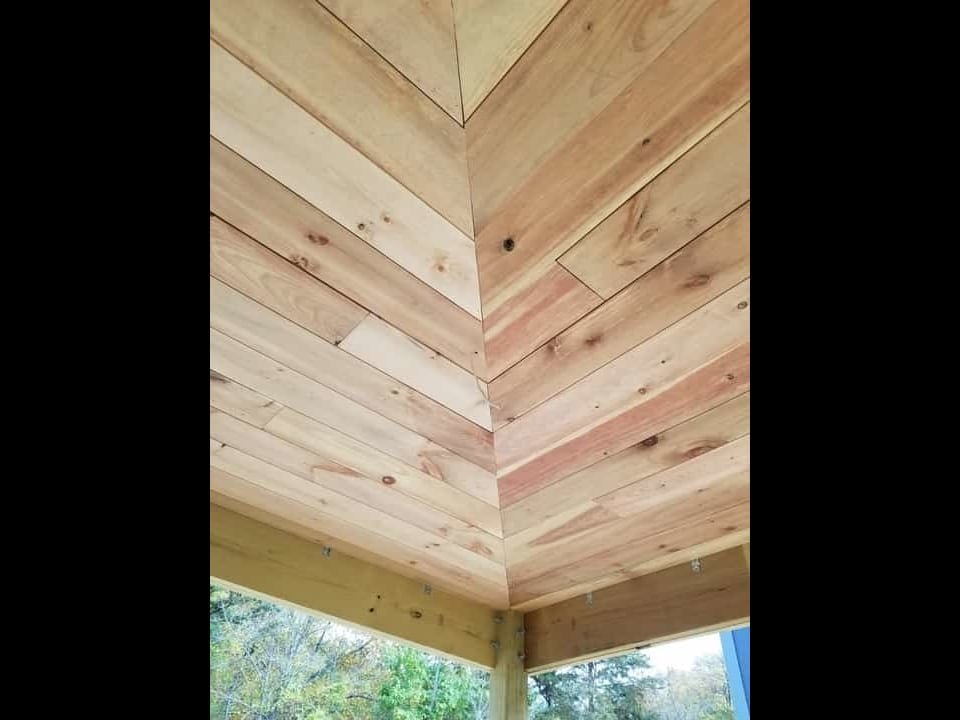
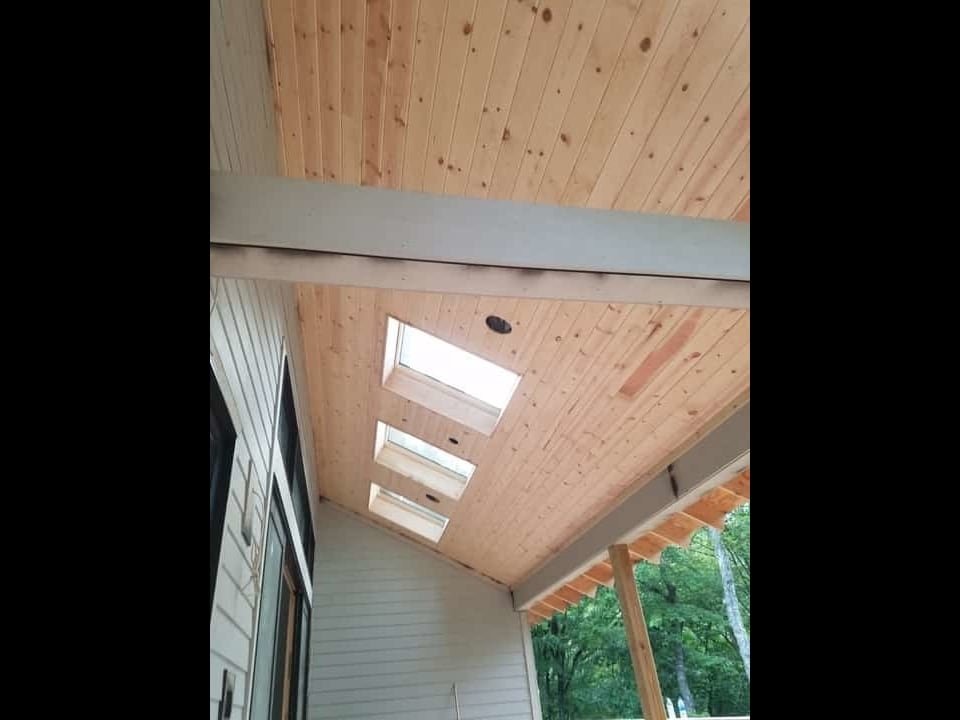
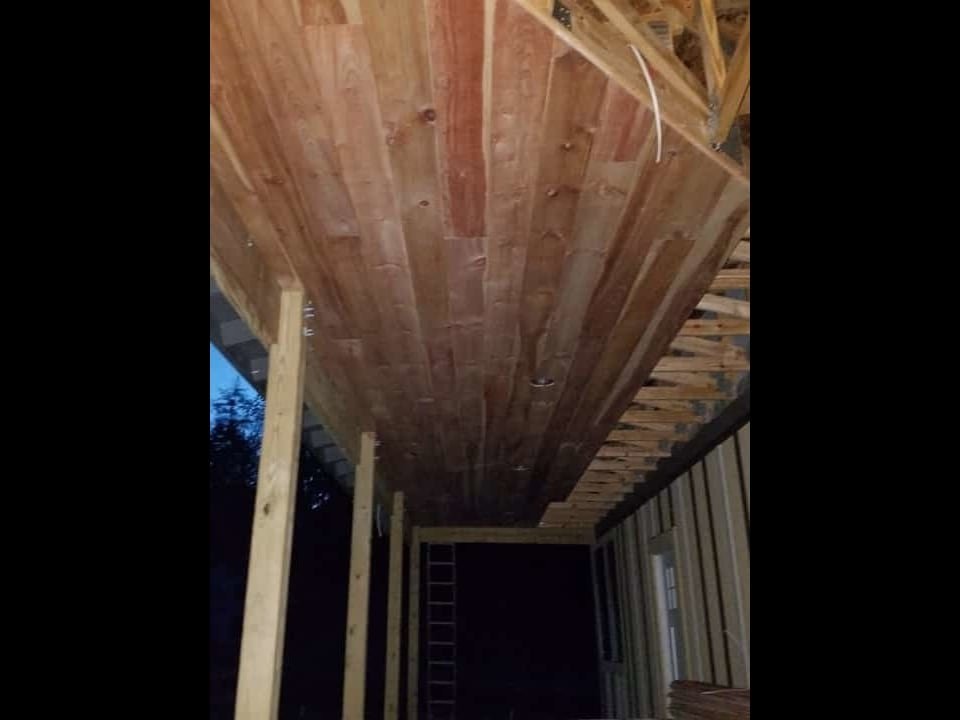
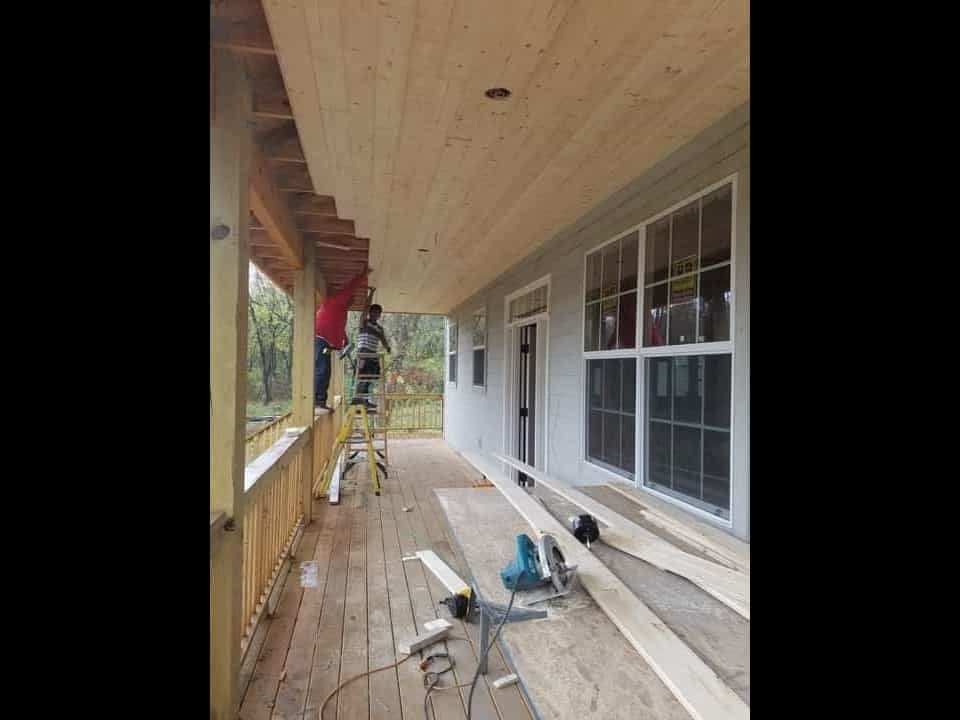
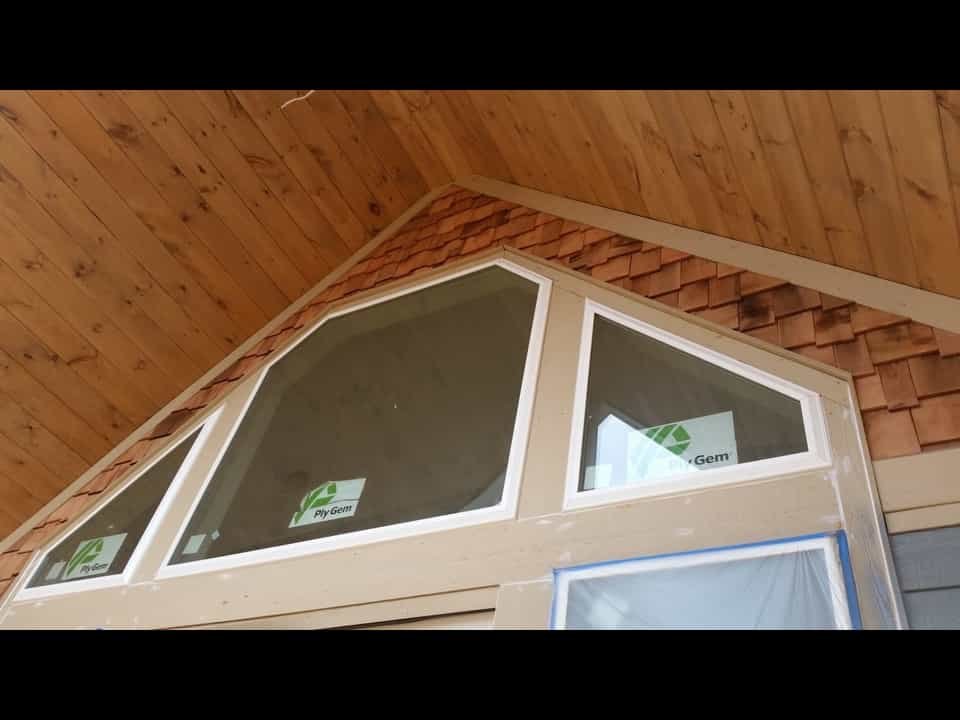
Services
TNG (Tongue and groove)
Tongue and groove is a method of fitting similar objects together, edge to edge, used mainly with wood, in flooring, parquetry, panelling, and similar constructions. Tongue and groove joints allow two flat pieces to be joined strongly together to make a single flat surface. Before plywood became common, tongue and groove boards were also used for sheathing buildings and to construct concrete formwork.
Services
Tile Work
Tile work, also known as tile setting or tiling, is the process of installing tiles on surfaces such as floors, walls, countertops, and backsplashes. This craft involves cutting, arranging, and securing tiles using adhesives like mortar or thin-set, followed by applying grout to fill the gaps between tiles.
Common Types of Tile Work:
- Floor Tiling – Found in bathrooms, kitchens, and outdoor areas.
- Wall Tiling – Used for showers, kitchen backsplashes, and decorative walls.
- Mosaic Tiling – Small, intricate tile designs often used for artistic or detailed patterns.
- Outdoor Tiling – Applied on patios, pool areas, and walkways.
Materials Used:
- Ceramic – Common and affordable.
- Porcelain – Durable and water-resistant.
- Glass – Stylish and often used in mosaics.
- Natural Stone – Includes marble, granite, slate, and travertine.
Tile work requires precision and skill to ensure a durable, aesthetically pleasing finish.









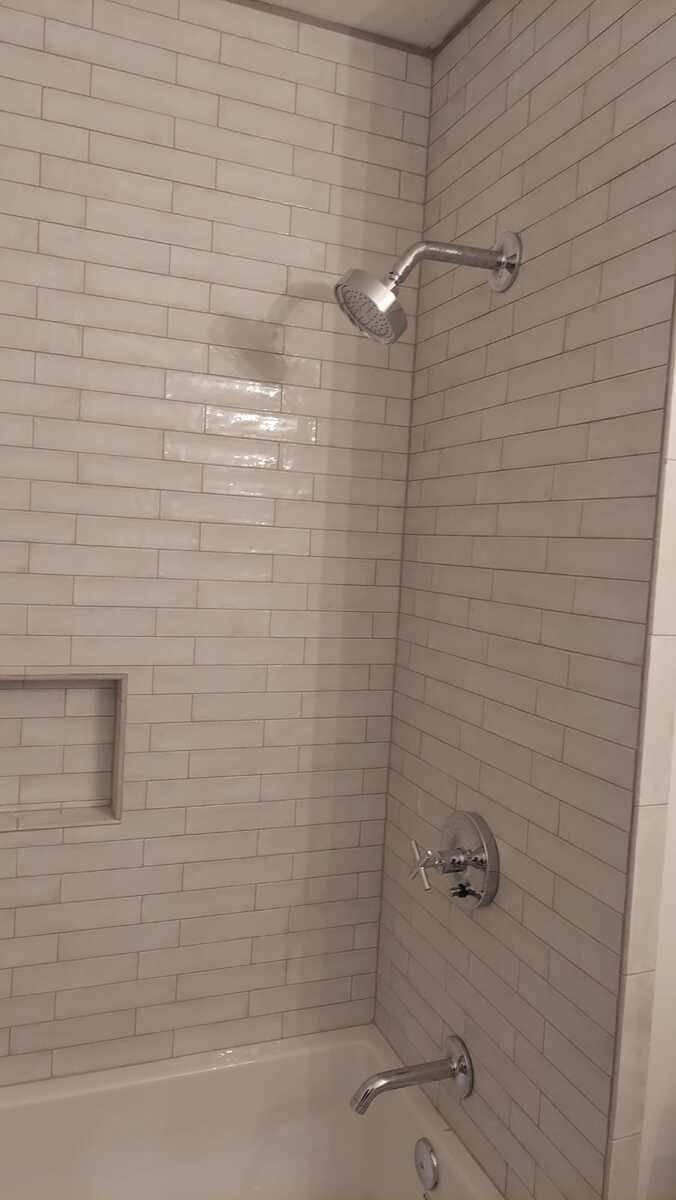
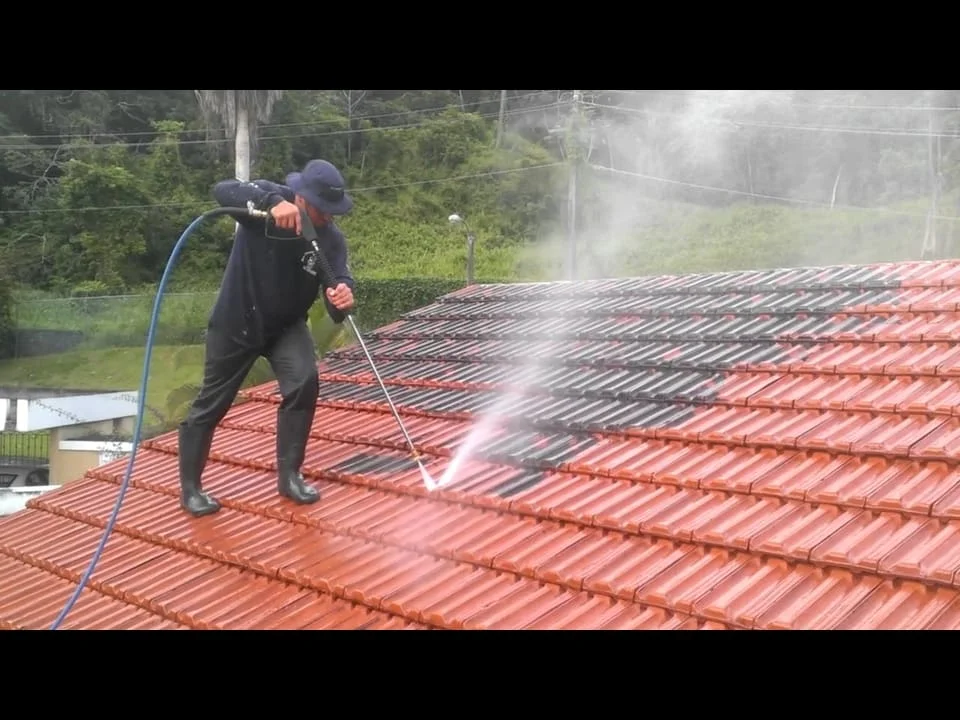
Services
Pressure Washing
Pressure washing or power washing is the use of high-pressure water spray to remove loose paint, mold, grime, dust, mud, chewing gum and dirt from surfaces and objects such as buildings, vehicles and concrete surfaces.
Services
Insulation and cleaning services
Attic Guys offers a truly unique one-stop solution, with attic-cleaning services guaranteed to tackle even the most pesky problems you may be facing. There is no need to call in a separate attic-cleaning company and insulation contractor, which can be time-consuming and often more expensive.
